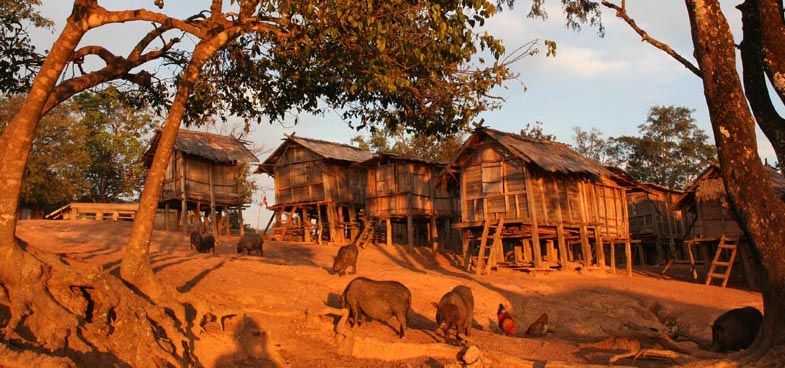Some informed people told us that a real and authentic primitiveness in Southeast Asia can be still found only in the north uplands of Laos. Arriving at Bangkok, we immediately looked for options to go further north. So we bought tickets to the first local flight, that would lead us north – to the provincial town of Thailand – Chiang Mai. Although the liner did not look like we have taken a local flight:
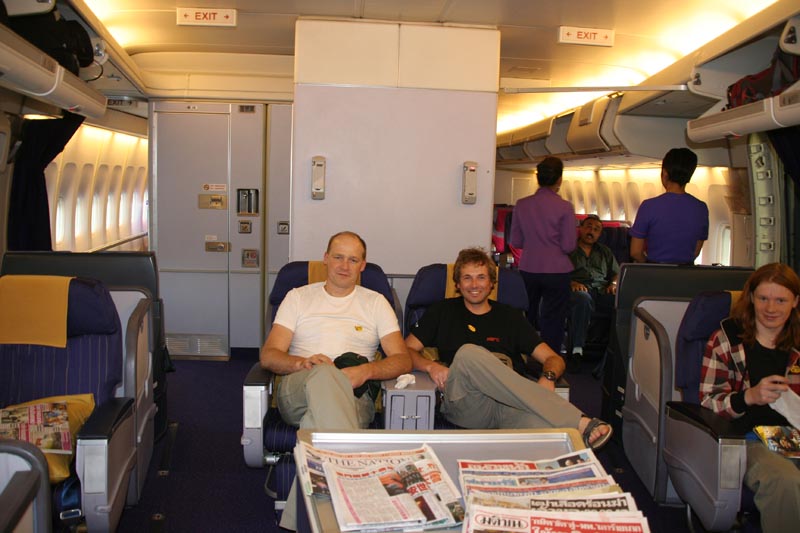
The exploration of Chiang Mai old town we left for another journey, took a taxi and continued purposefully moving toward Laos. It turned out to be almost 300km till the only border crossing that took us 6 hours but for our taxi driver – just as many back home. That was very expensive – at the end we had to part from exactly100 USD! We immediately drank some beer on these unanticipated costs in the shore of the great Mekong River.
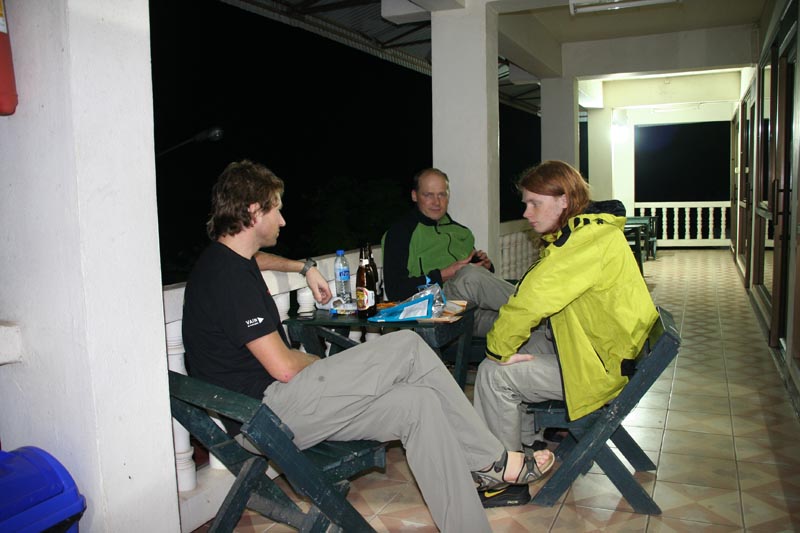
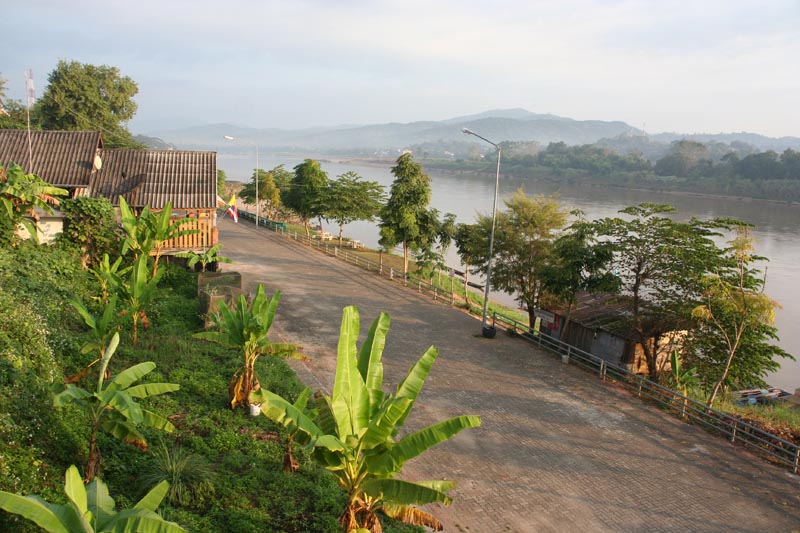
We had arrived at Mekong very near the place where Thailand, Laos and Myanmar (Burma) meet and which the travellers call the Golden Triangle. Golden because for centuries this has been the largest point of opium transit in the world. Thailand, or Siam in those days, managed to build all its economic power on opium taxes becoming some kind of a free zone for legal trade and use of opium. In the 19th century opium taxes accounted for 25% of the Siam public revenue. A free trade of opium was prohibited only in 1959.
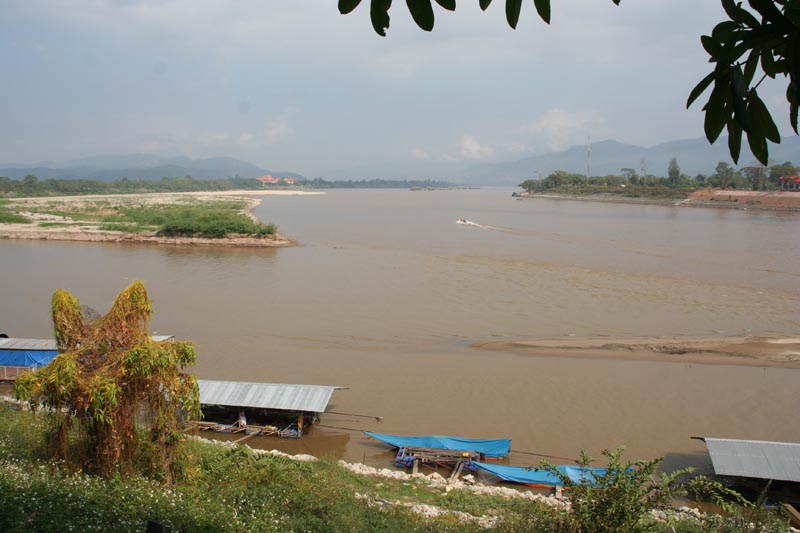
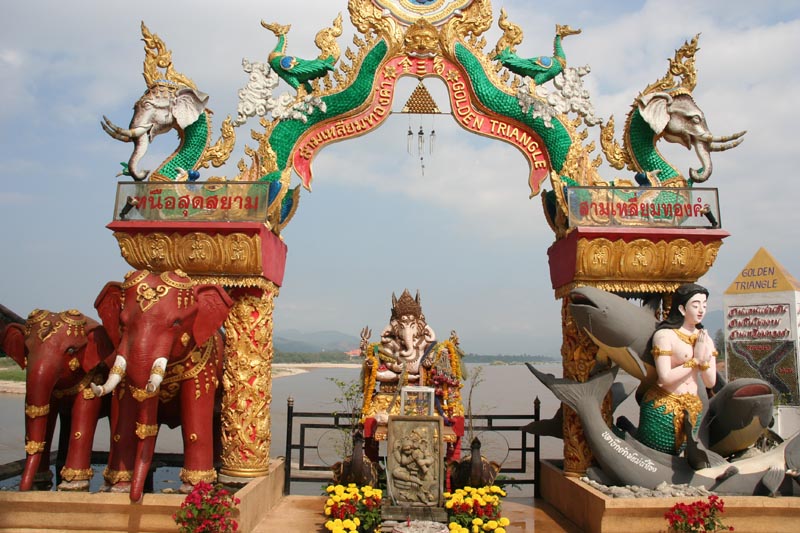
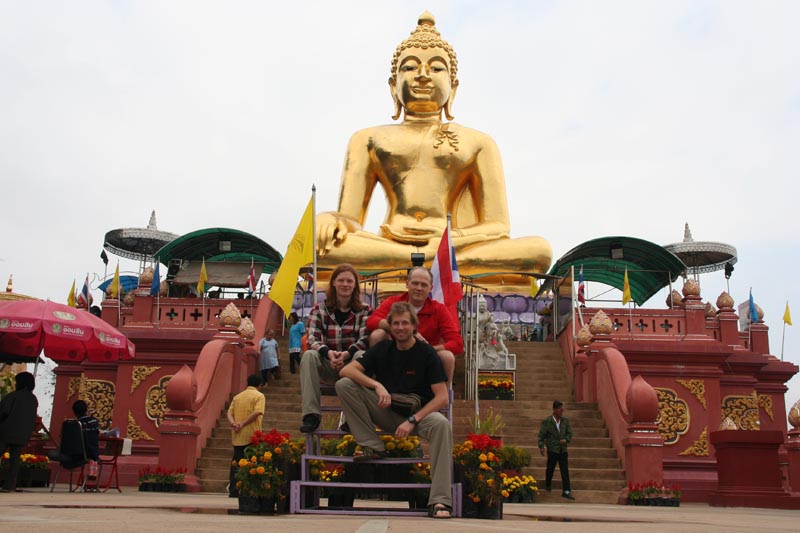
Next morning a bargy boat took us across Mekong to the mysterious Buddhist, animist and communist country Laos controlled by military and influential officials. To a country in whose territory Americans threw 260milj. bombs during the Vietnam War (e.g., 40 bombs on each citizen of Laos), from which 80 milj. never exploded and are still on the ground of Laos. American pilots, fearing to fly further to Vietnam, dumped their bomb loads over Laos and safe and sound returned to the base. The boat took us to a country of whose road safety Lonely Planet wrote: there are information about Khmer bandits who attacked buses on the 13th road (which we had decided to take), killing all passengers and burning down the buses..
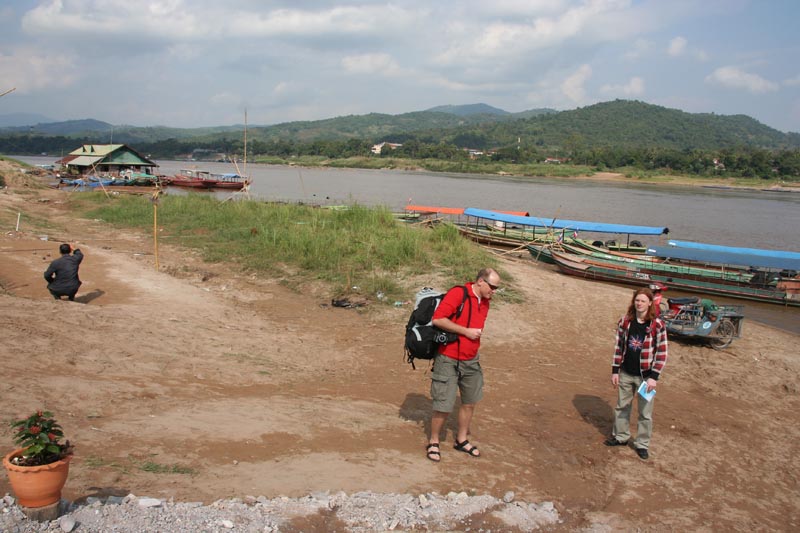

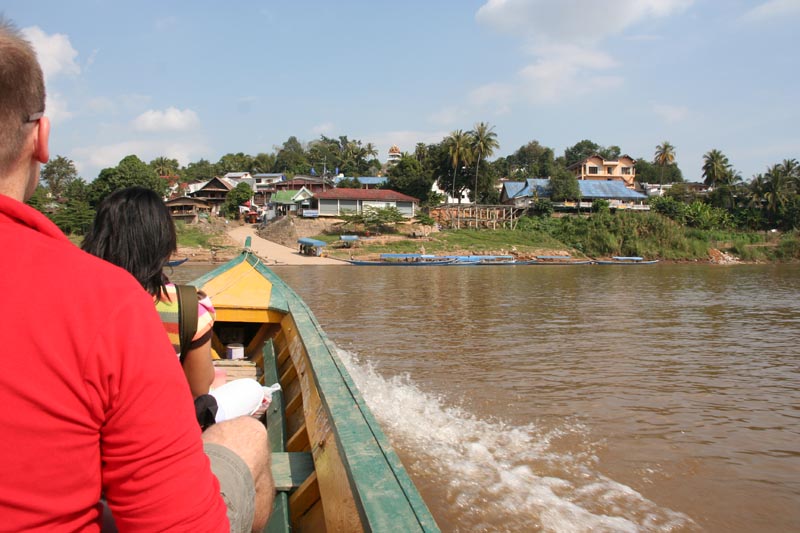
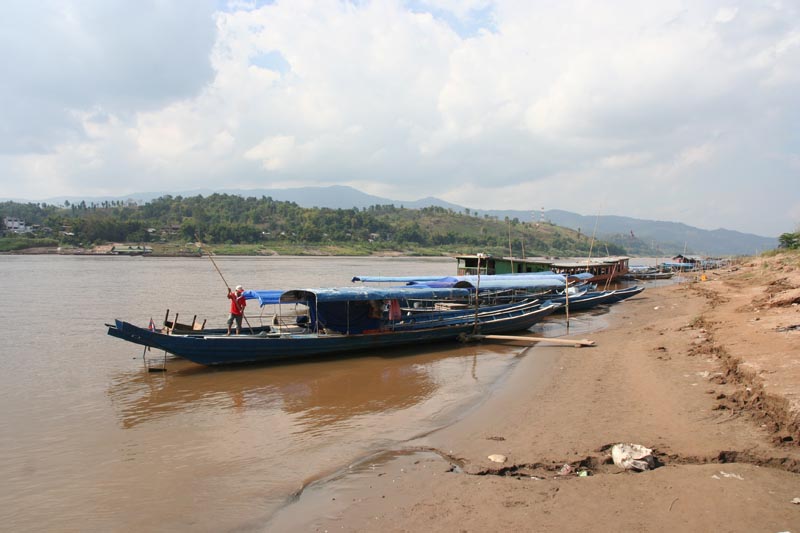
The first impression, however, was not so sinister. Nice tavernas on the terrace above Mekong, nice people, tasty “fiche” (this is how they call fish), a rather acceptable Beer Lao – the only beer brand in the country whose production is most likely controlled by one of the senior officials or generals.
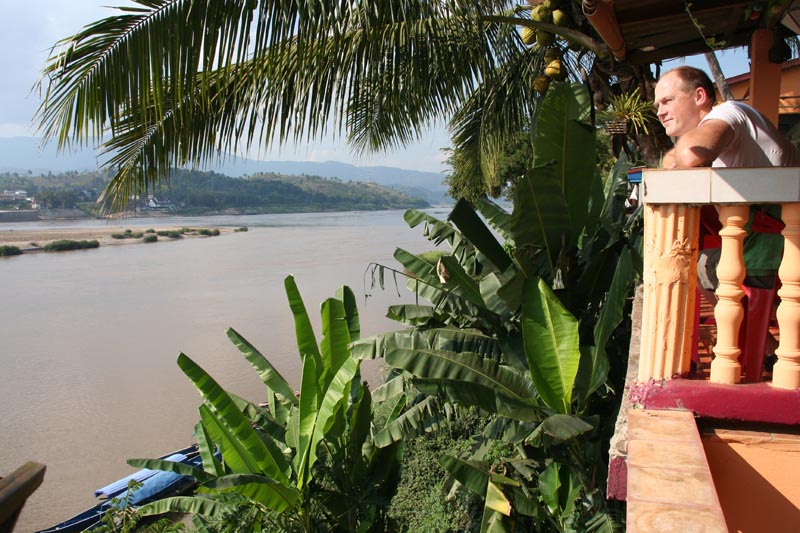
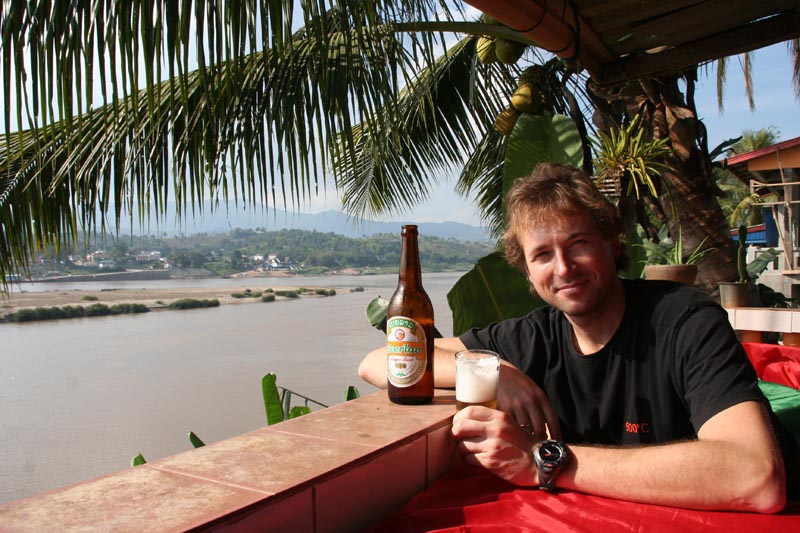
We rented a Toyota Jeep for the road and dived into the jungly north mountains. A few years ago the roads were palpably improved. Lonely Planet stated that the trip to Vieng Phokhai takes 8 hours but our driver promised that it would take only 4. Thailand funded the construction of a road that was to become a direct transit arterial road with China. However, not all of the funding actually reached the destination. The bitumen strayed on some private roads to the quarries of gold-digging. The arterial road of Indochina looked pathetic and it would be better if the asphalt had not even been covered at all. The whole road consisted of squares with sharp edges, where the asphalt had disappeared.
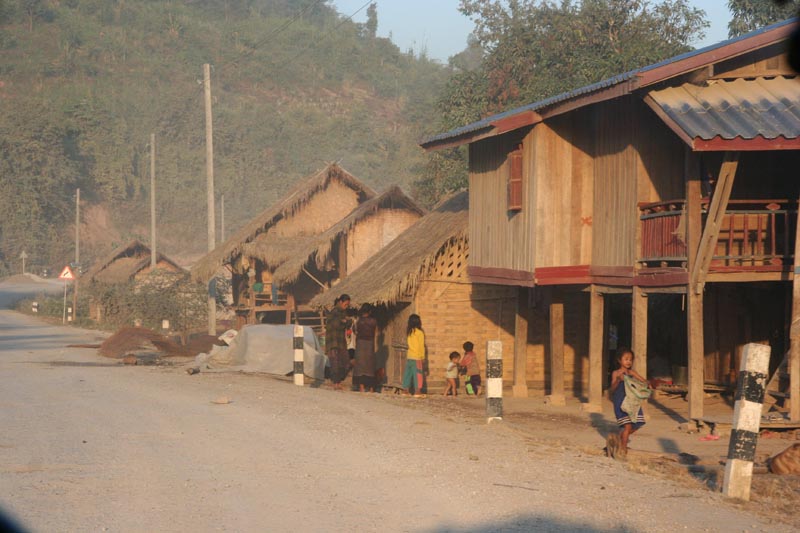
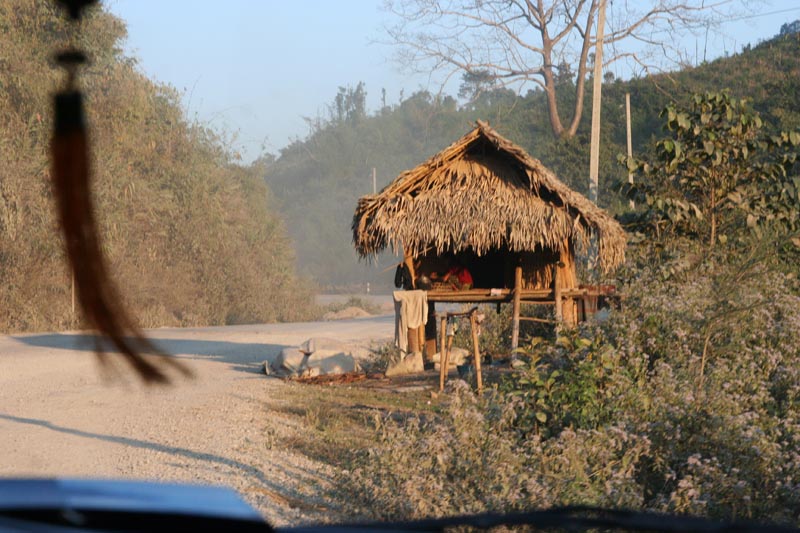
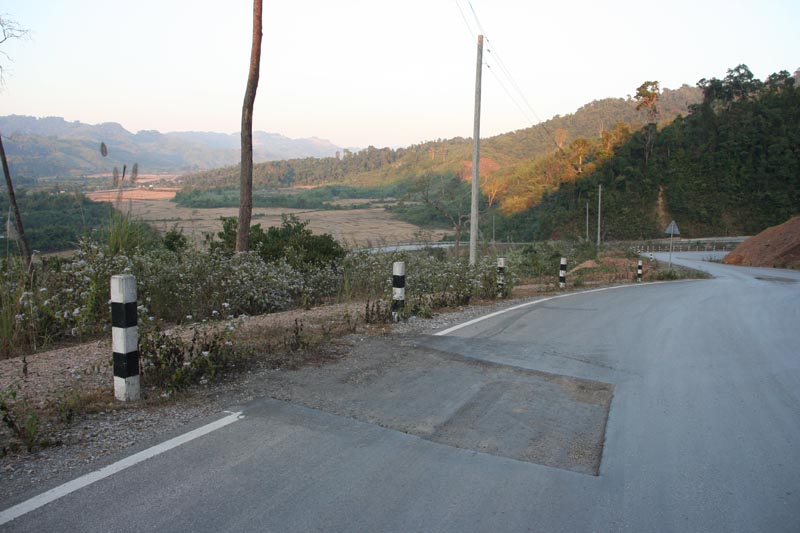
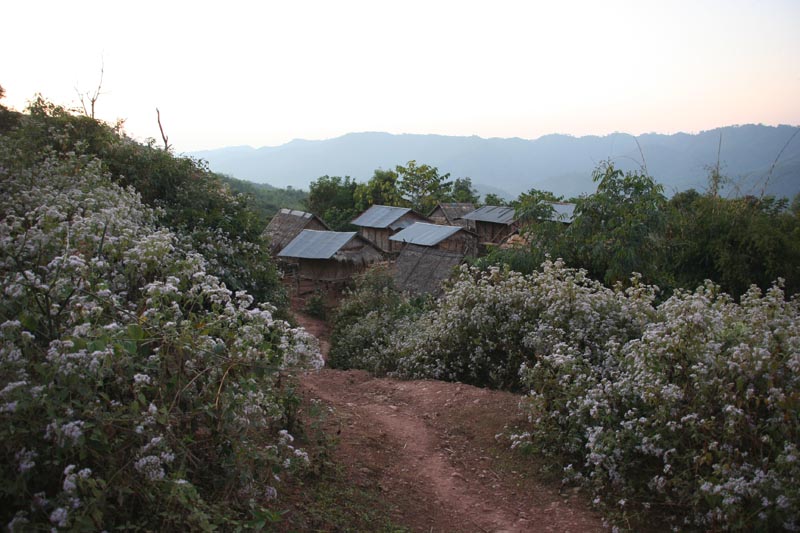
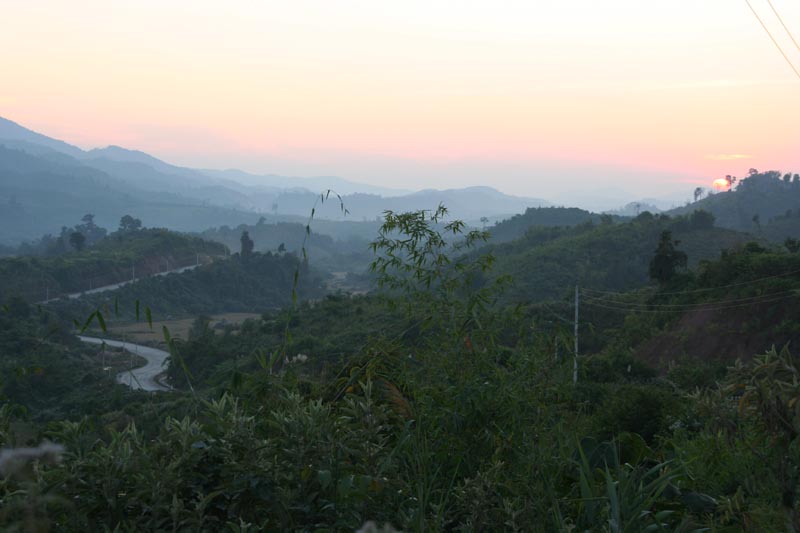
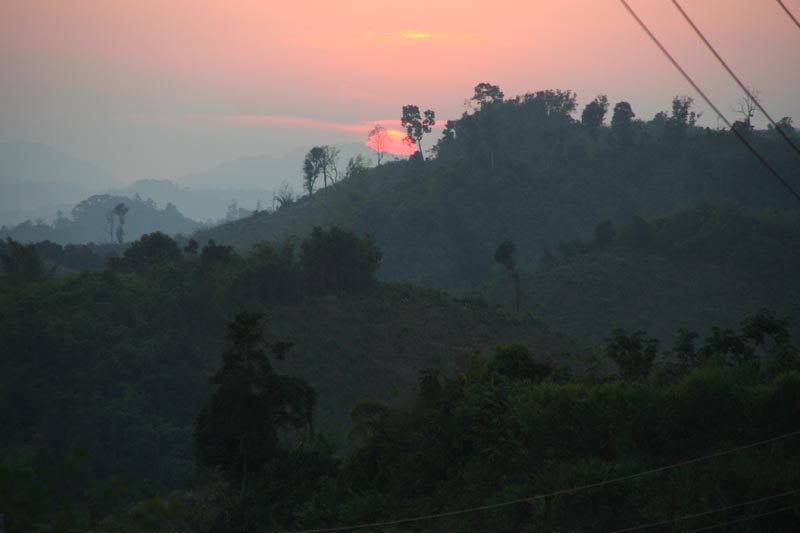
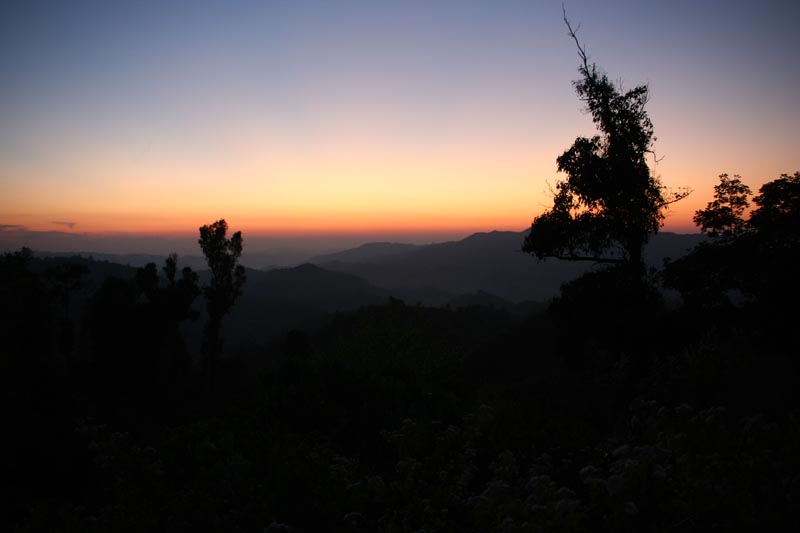
We reached Vieng Phokhai after sunset – a place with a few guest houses and a Laos-styled roadside tavern. We had some Lao Lao that here is a universal name for spirits which unlike Beer Lao is produced in every village and, of course, taste like local moonshine. The guest house fully met our expectations – wooden huts but with mosquito nets over beds and a shower and toilet in each room … The shower was meant to wash after the toilet as they do in the east.
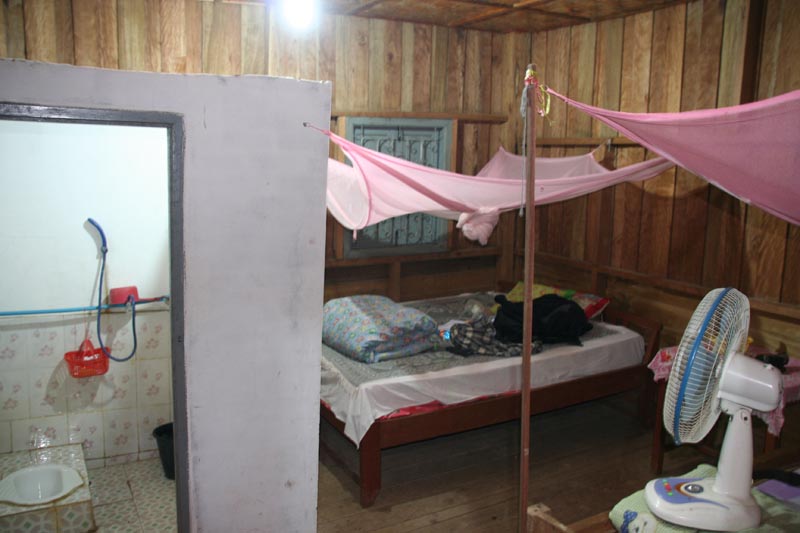
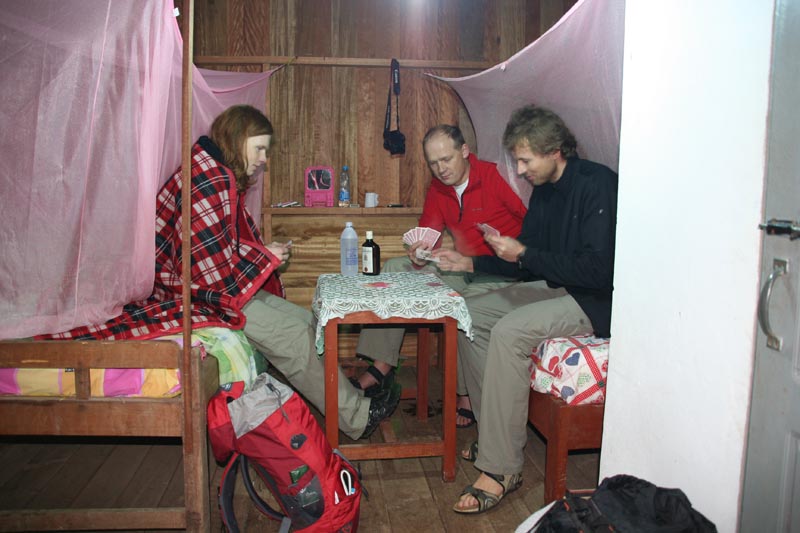
At around six our sleep was disturbed by a polyphonic speaker rumble. The anthem and radio news echoed in the morning mist over Laos. Another day had begun, families burnt trash and prepared breakfast on the fire, students exercised marching in the school yard.
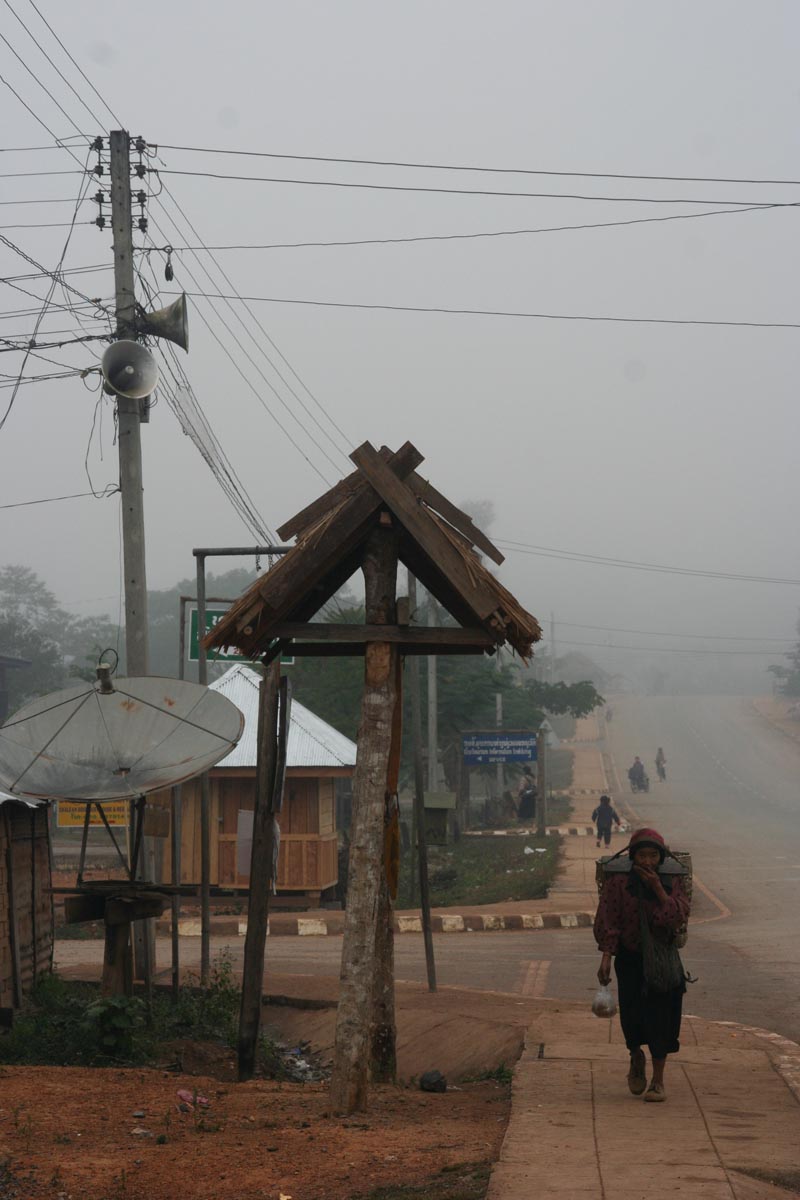
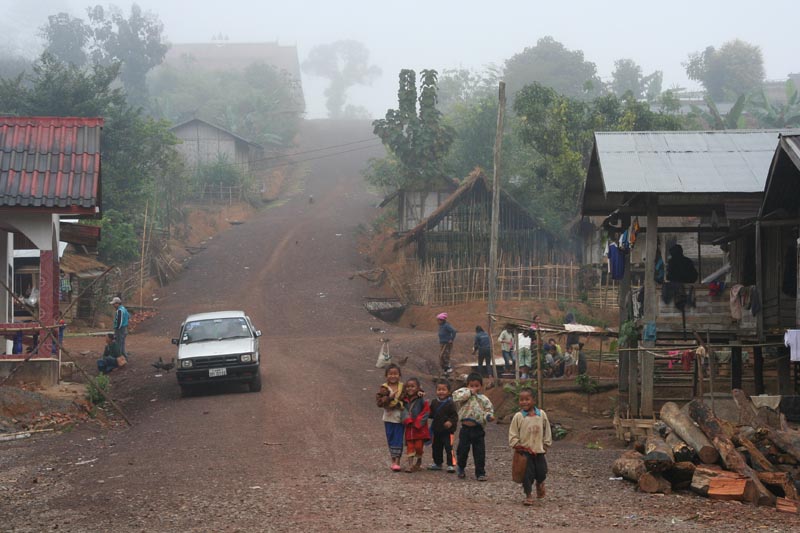
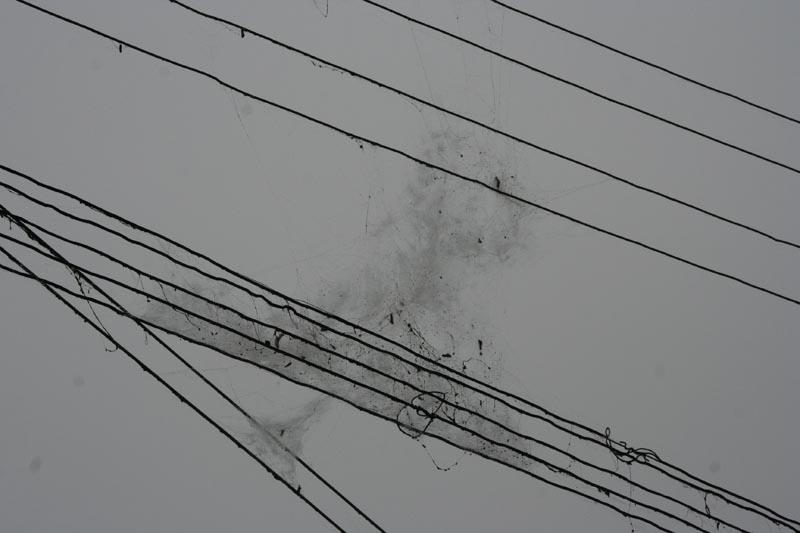
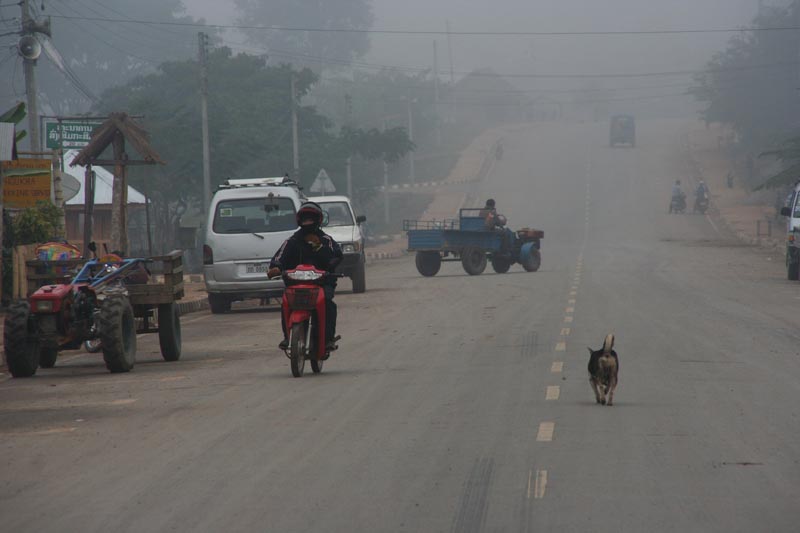
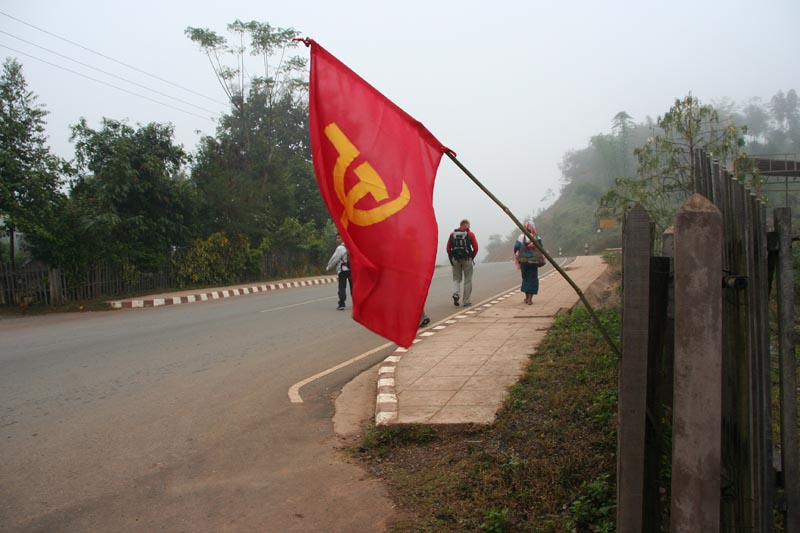
We ate our breakfast omelette and were ready to go in the mountains. We drew with our Toyota till the last village. We were joined by a handful of local women of uncertain age with black mouths from chewing on some kind of grass.
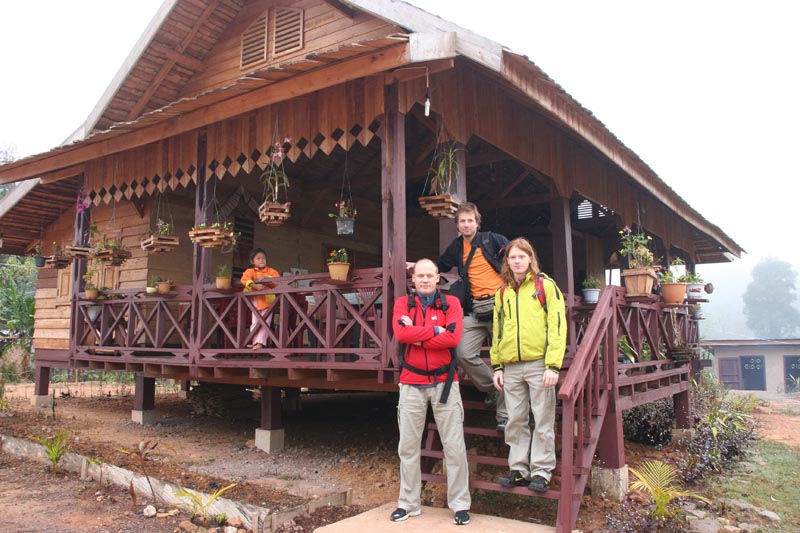
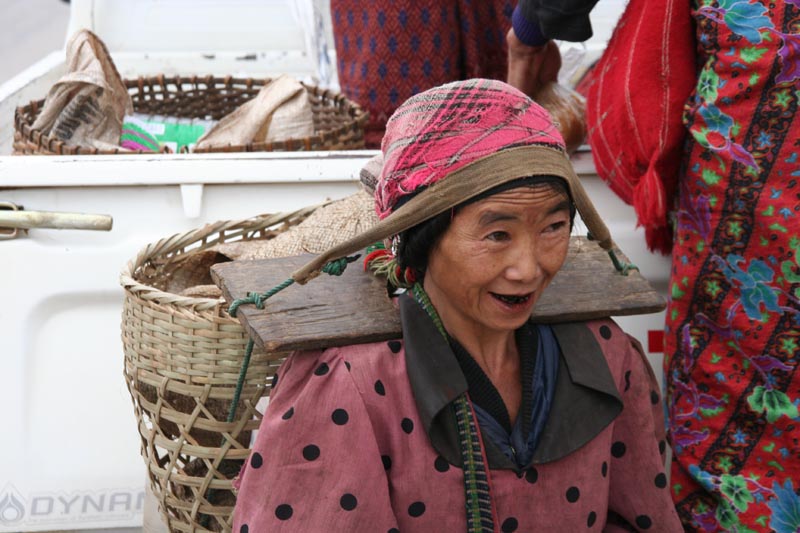
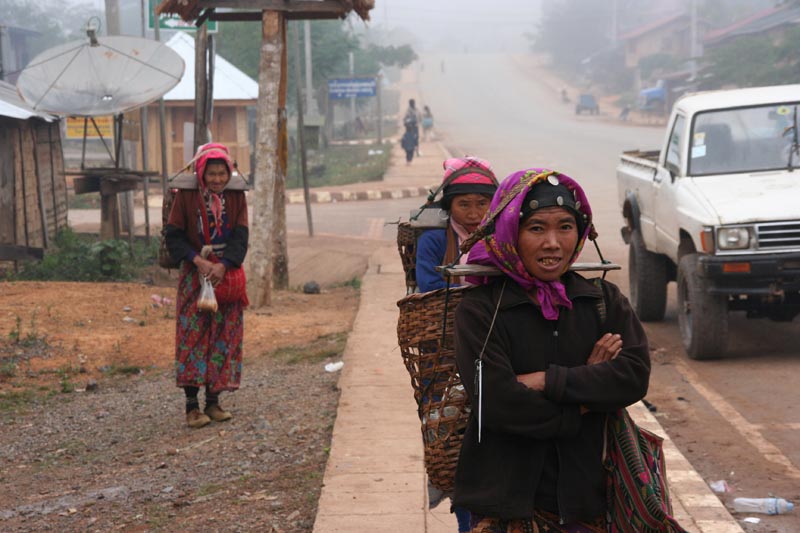
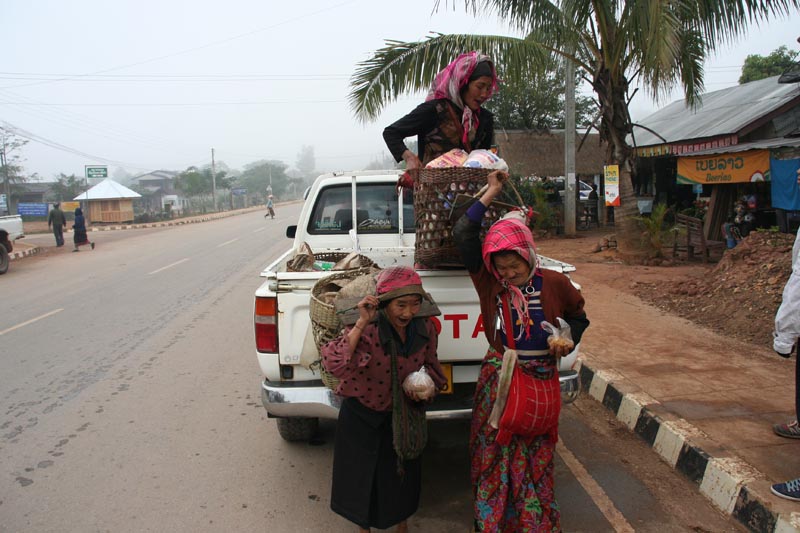
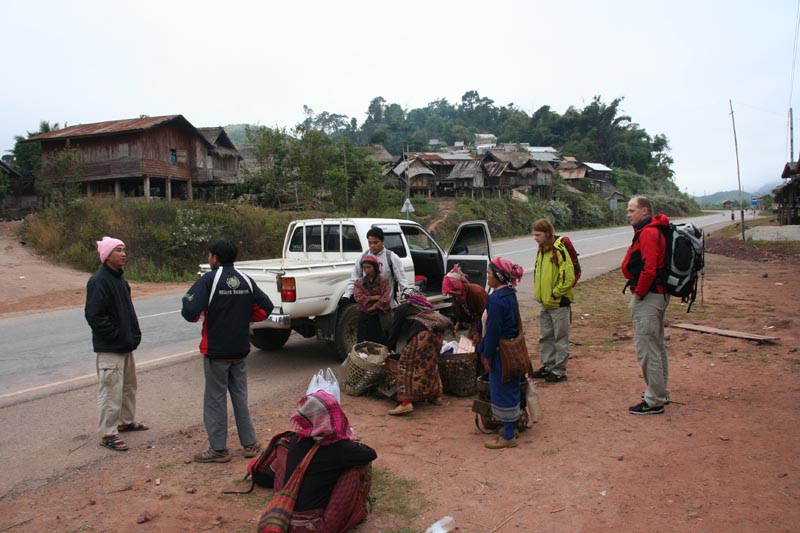
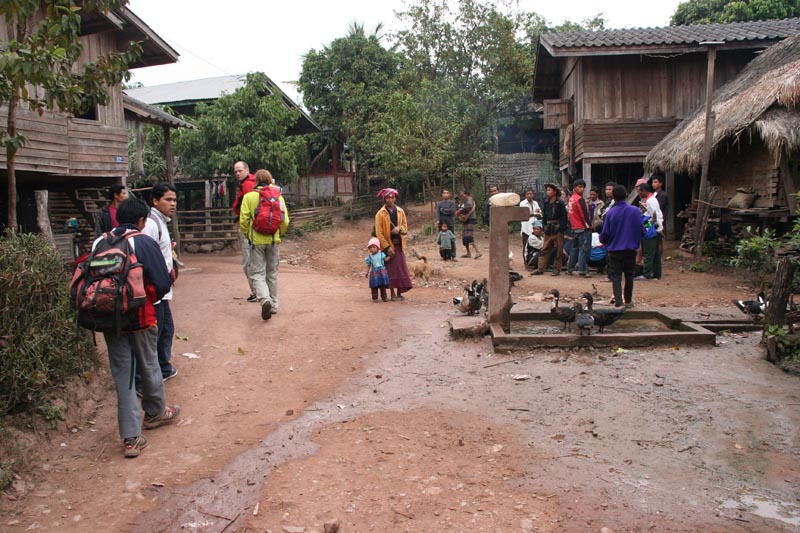
Today we had planned an 8-hour long trek to a village populated by Akha tribe deep in the northern highlands. Akha are animists who worship animals. The trail we will take is their only connection with the outside world. This is our route written with Garmin and then transferred to Google maps:
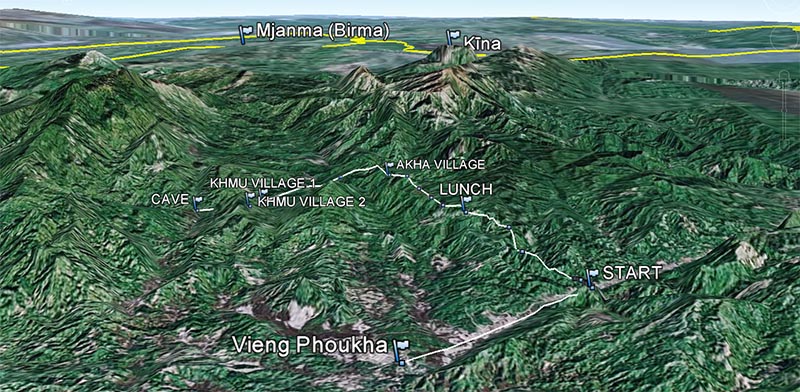
Here the road ended. Followed by the interested gaze of the villagers we dived into the misty jungles.
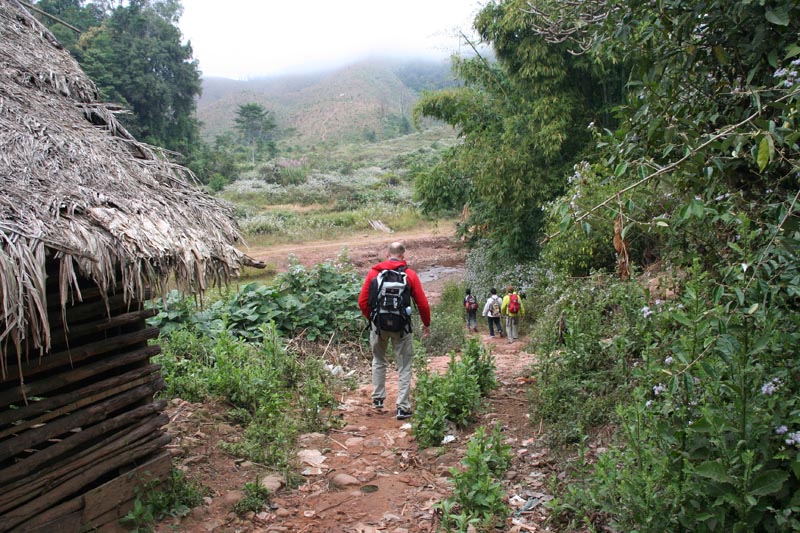
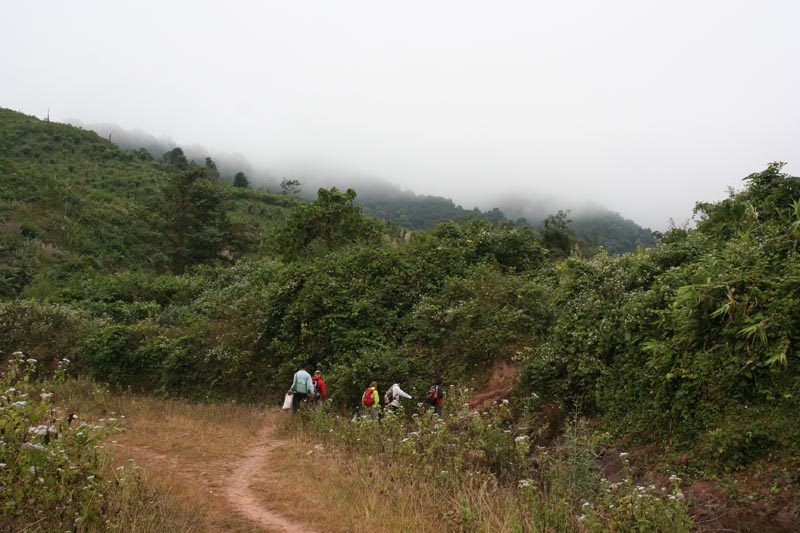
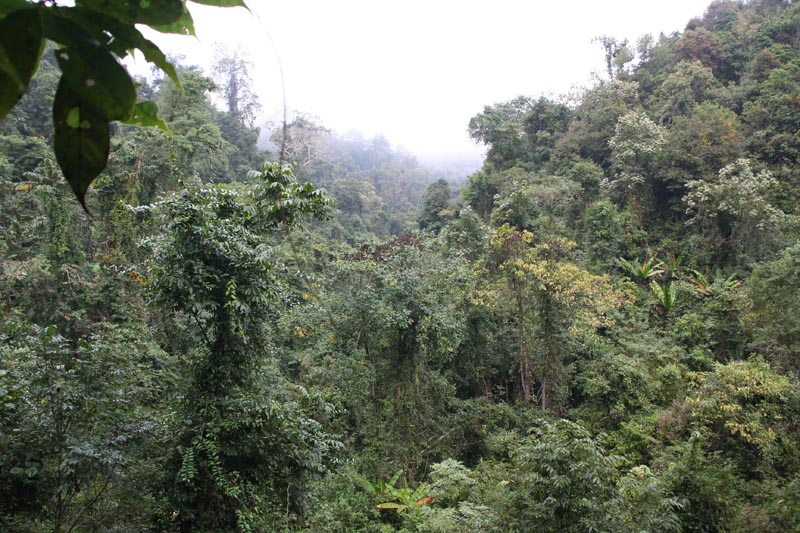
First we went through a deep river valley, which was filled with rain forests, palm trees, creepers and leeches, which housed on the wet trail.
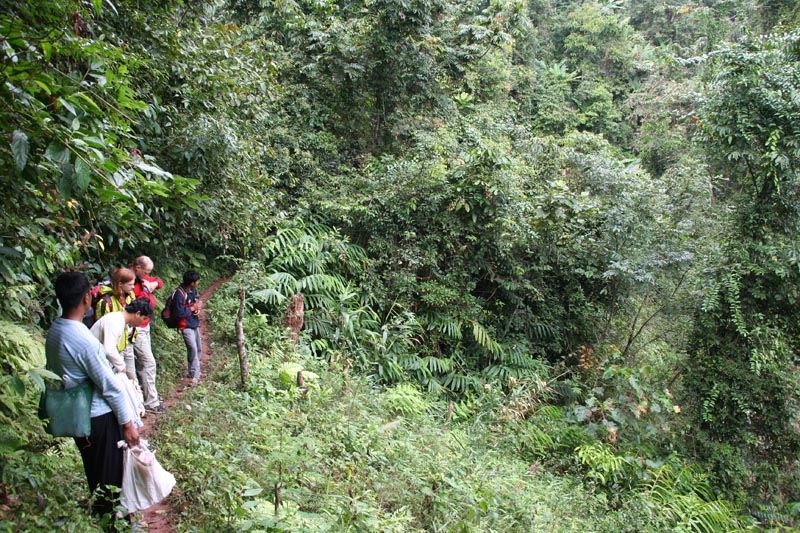
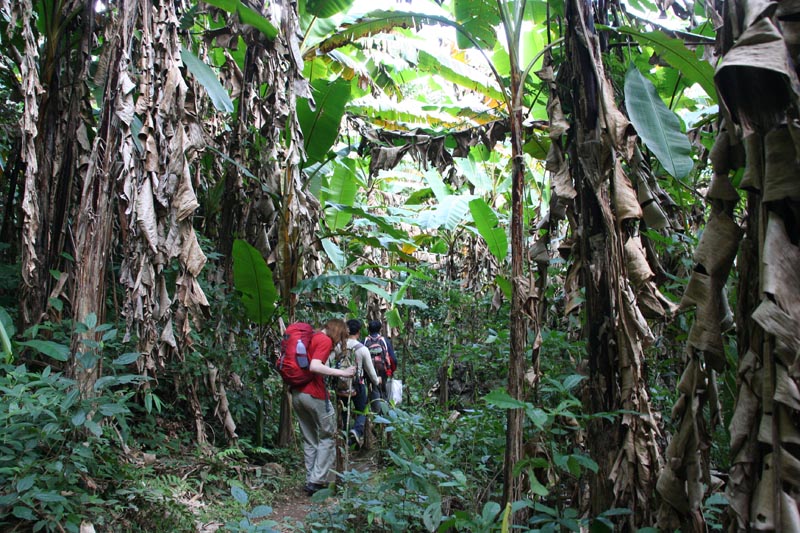
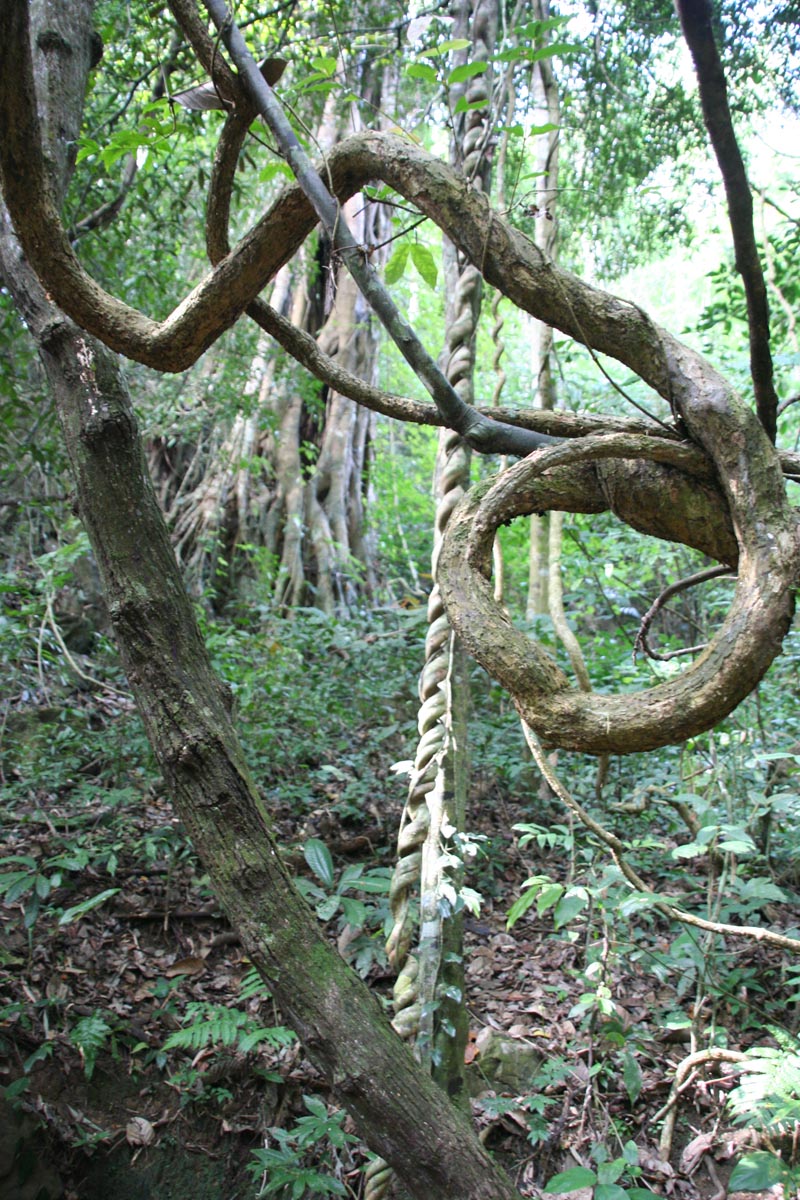
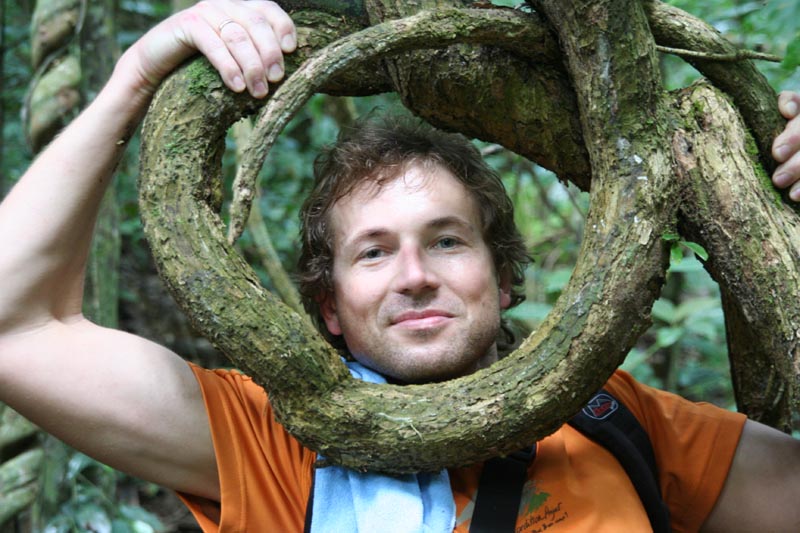

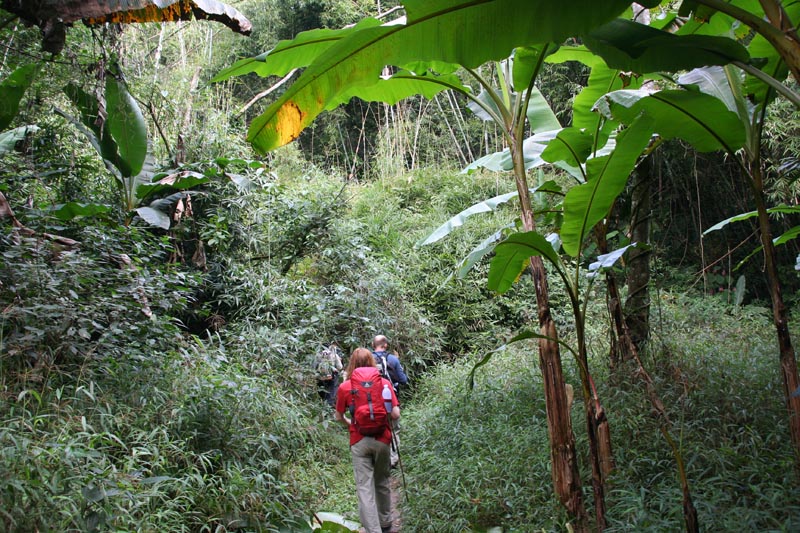
The trail crossed a mountain range and the vegetation was replaced by a dense bamboo jungle. It is hard to imagine how warriors could have got through such a natural fence during the Vietnam War. Natural obstacles were probably one of the main advantage of the Vietnamese.
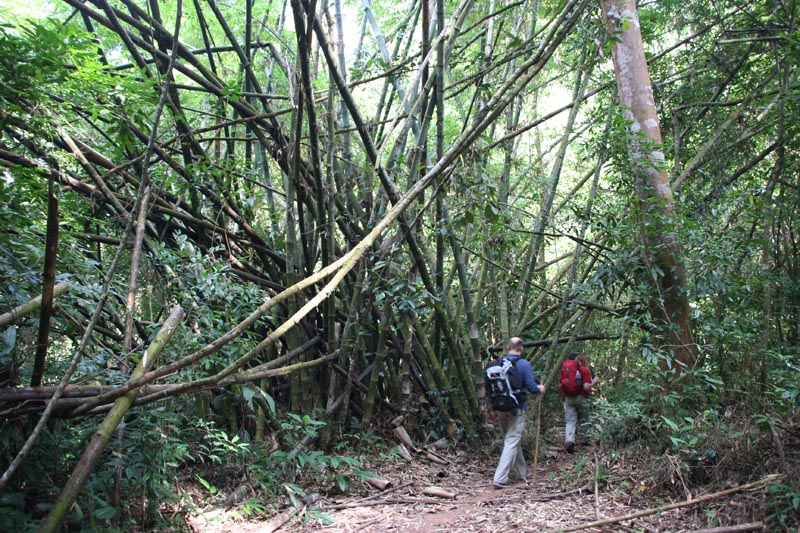
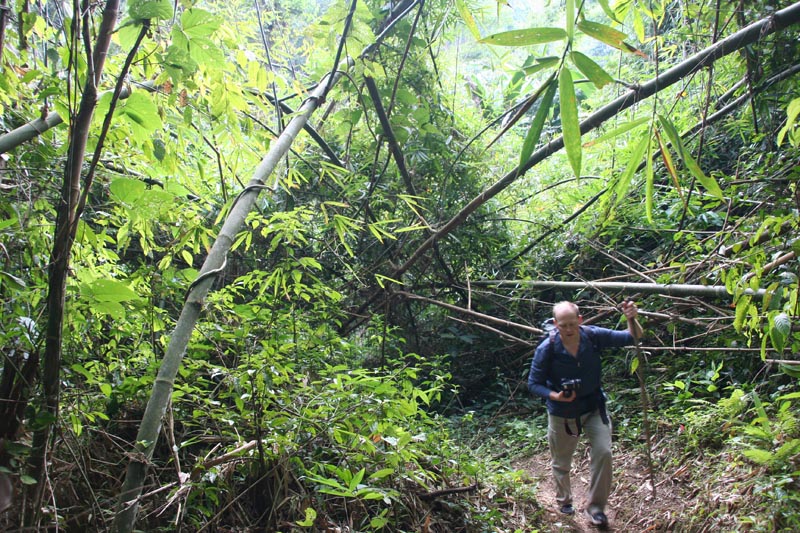
The meal was simple but excellent – a local guide made sticky rise from polyethylene bags (glutinous rice, that is undoubtedly the main course in all Indochina, which we could dip in chilli sauce, in some greens` sauce, snacking pieces of chicken or beef together with it and for the desert having a fried banana.
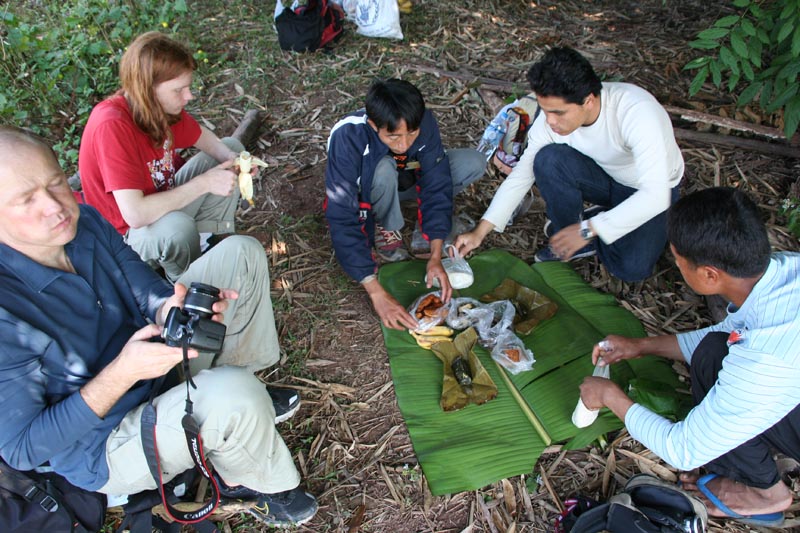
We went down again, crossed the river, back up the mountain again, and finally we could feel that we are approaching a populated area. It was indicated by shots which occasionally came from the jungle. Akha are hunters who mainly feed on meat and various jungle foods such as roots, bamboo shoots, palm cores and so on. In the middle of the trail we almost bumped into a dried bird’s head. We were in the territory of the tribe. Our guide suggested not to touch these sacred symbols of animists because the re-consecration of them could cost us a fortune. We didn`t get into detail and didn`t ask about the price.
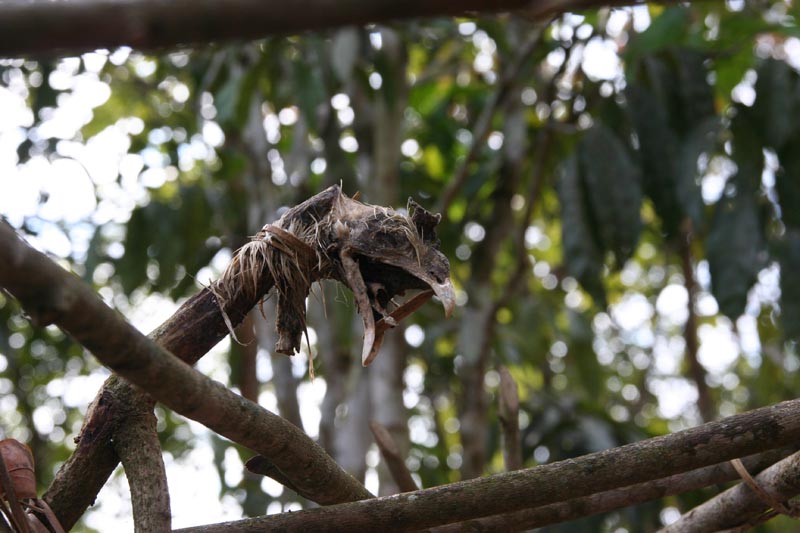
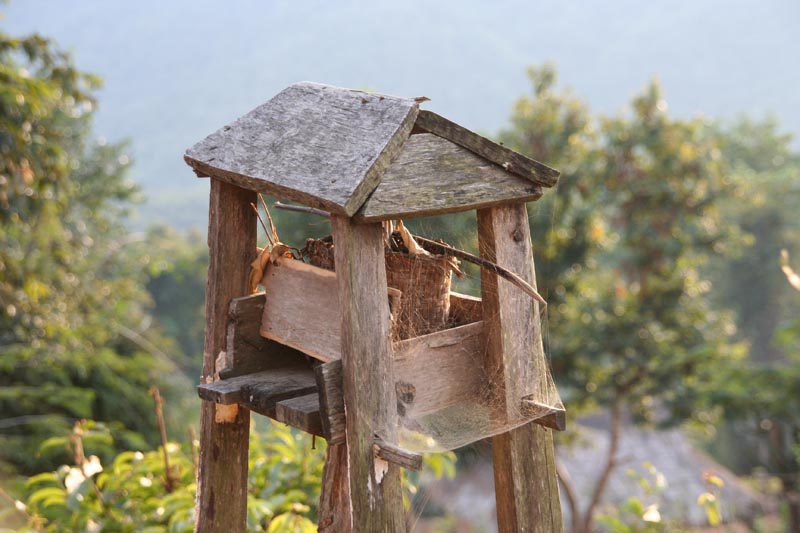
In the middle of nowhere, 8 hours away from the nearest road, in front of us appeared a loamy hill, all covered with houses. The houses were built on stilts and it indicated that we are in Akha village. In the afternoon, when we arrived in the village, it was inhabited only by dogs, pigs and children.
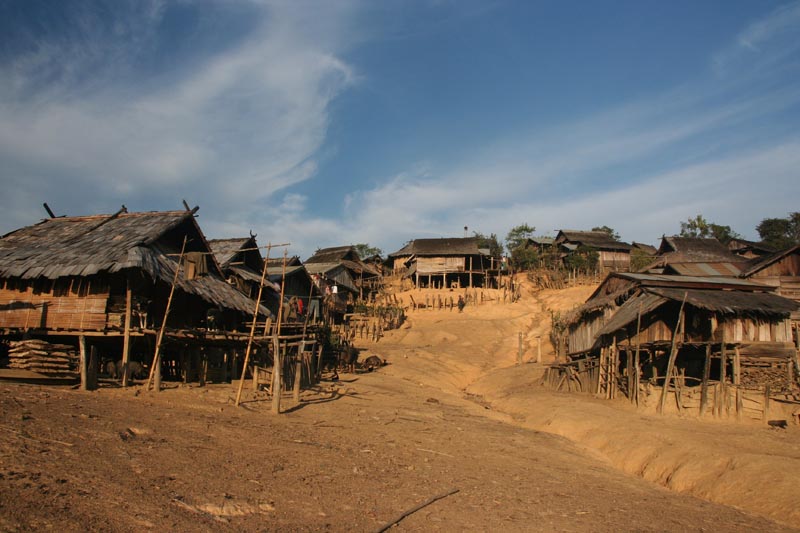
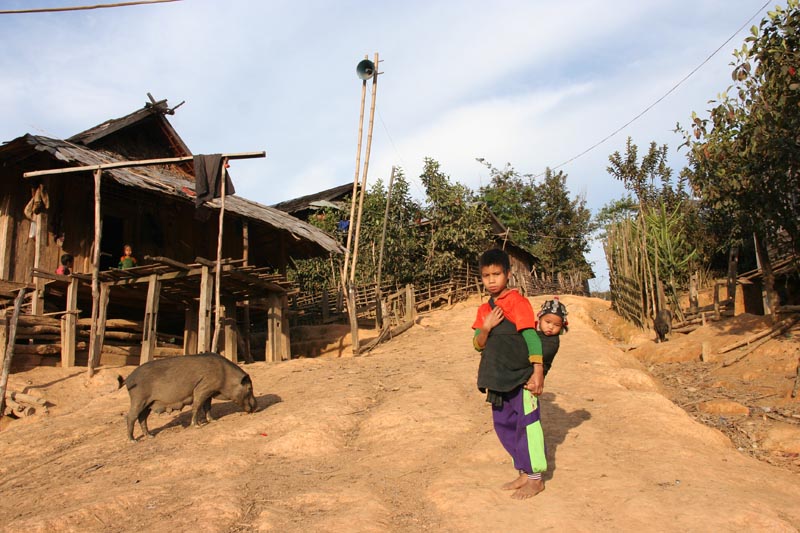
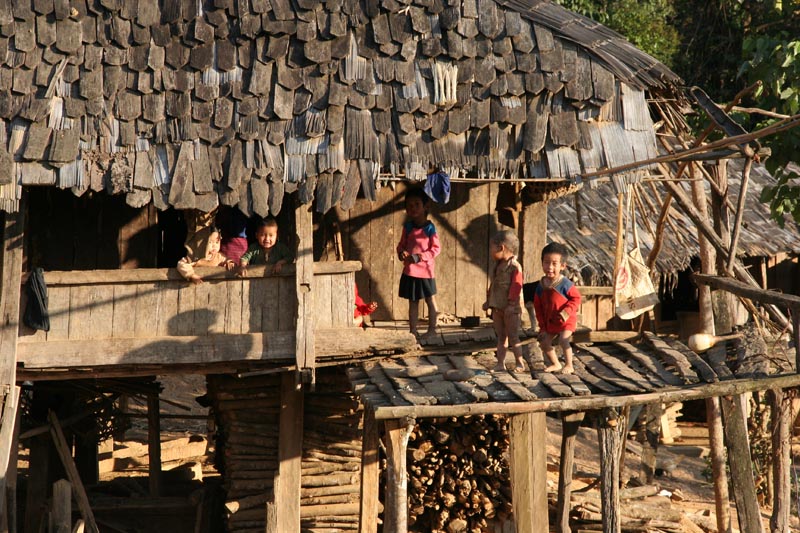
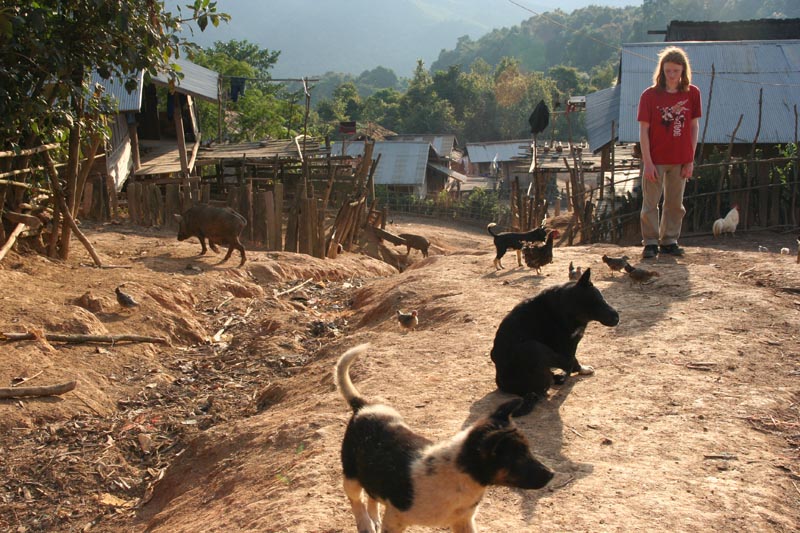
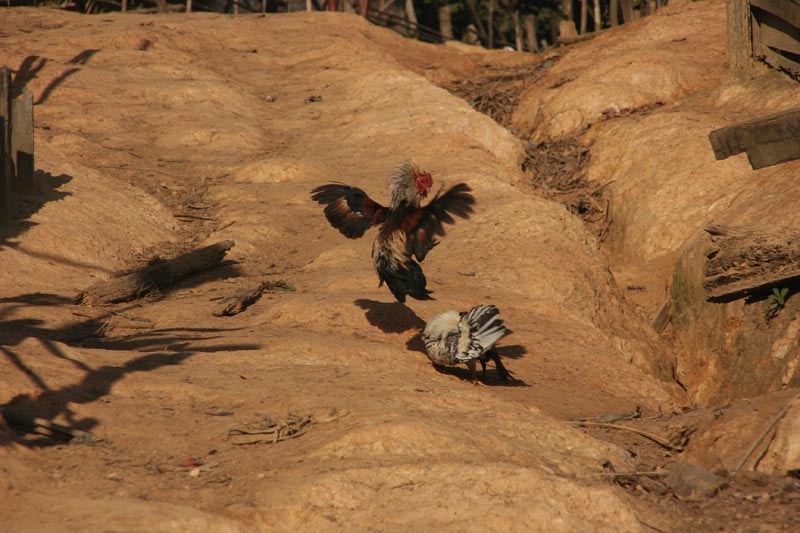
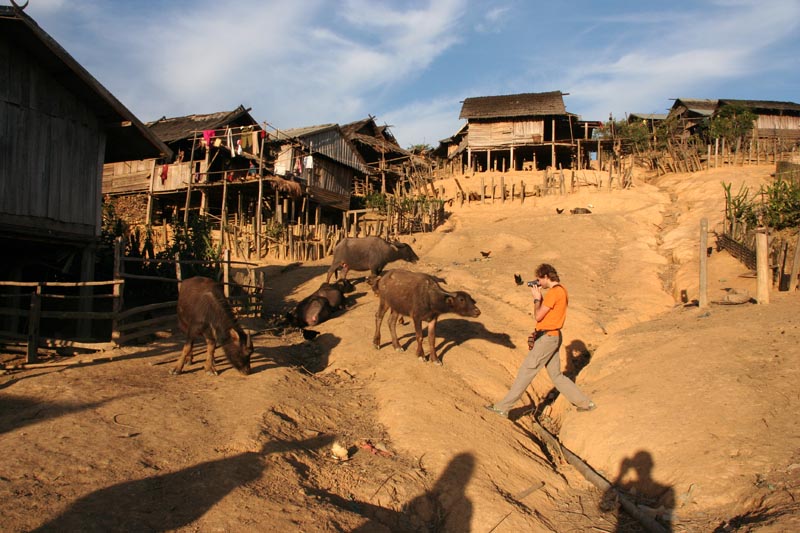
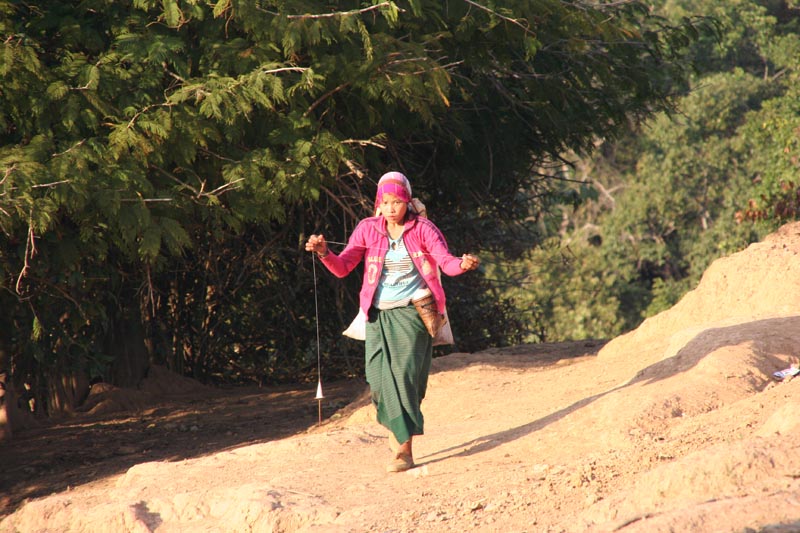
Later came the women who returned from collecting different jungle roots and fruits. Some of them were bare-chested.
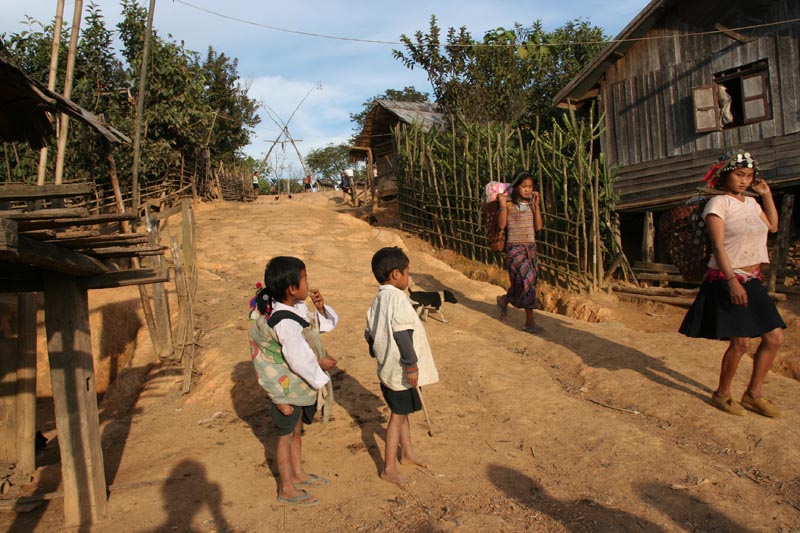

We wandered through the village and wondered about the unusual cluster of houses in the very peak of the hill. It turned out that these were the shelters for the night for the village girls who had reached marriage age. The girls then leave home and sleep in these huts but any guy from the village can visit them and sleep with any of them. Those couples, between whom the right connection appears, get married. Democratically!
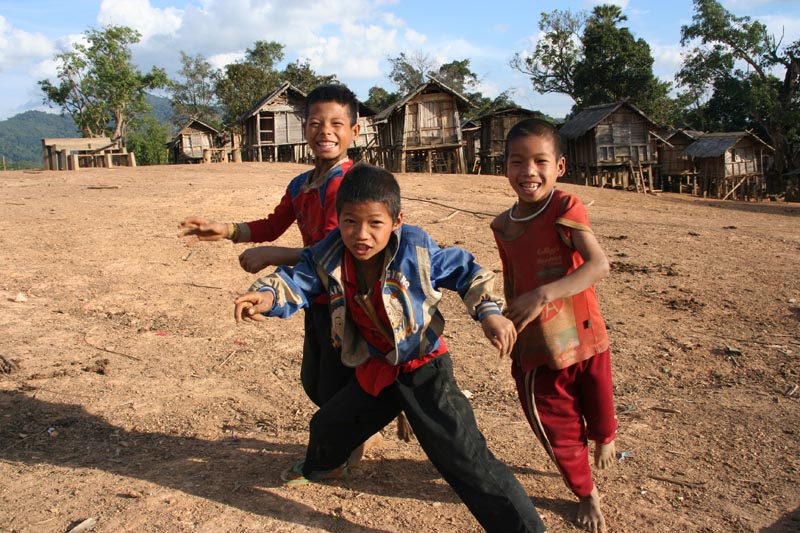
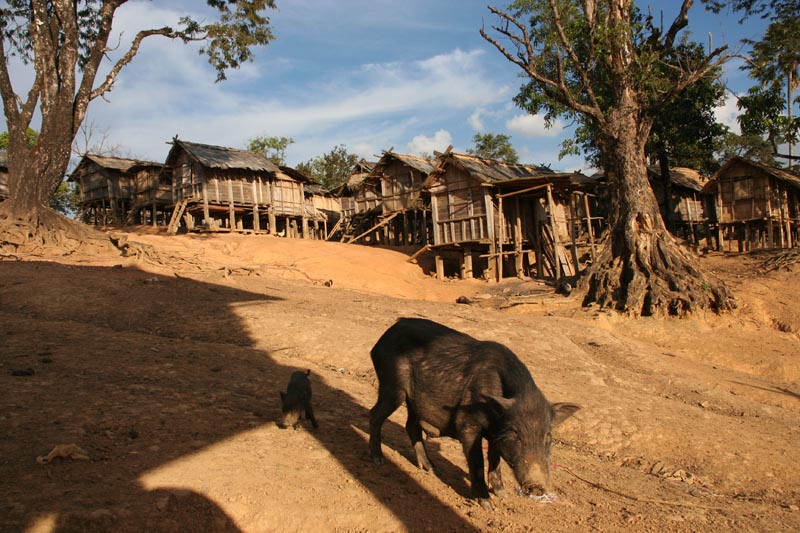
Before twilight the village men – hunters – came home. They proudly carried huge flintlocks over theirs shoulders – weapons which were still used in the 19th century. We bought a freshly shot bird form one.
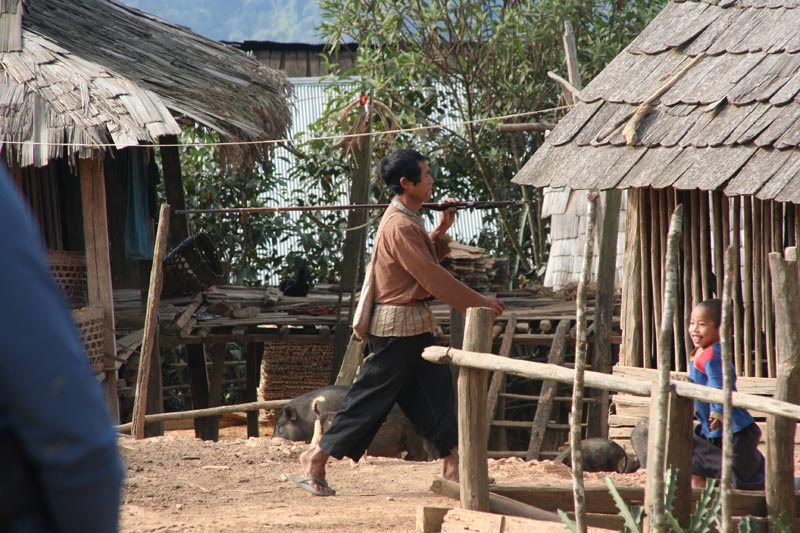
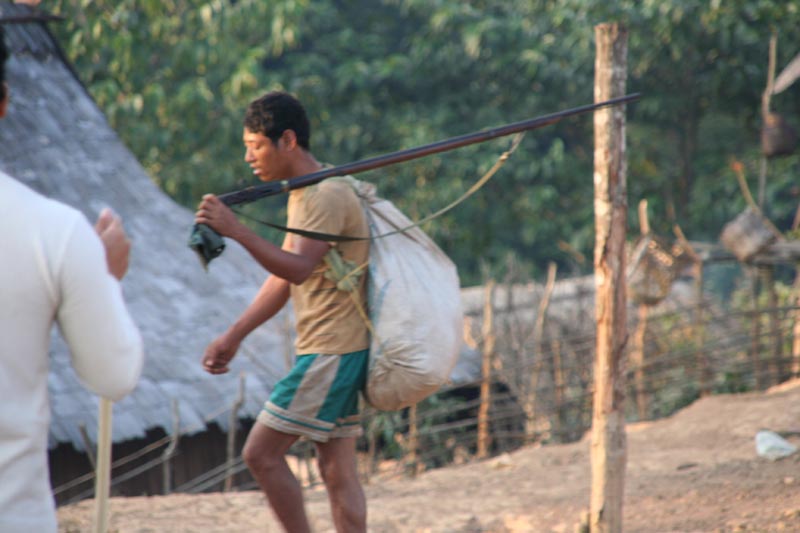
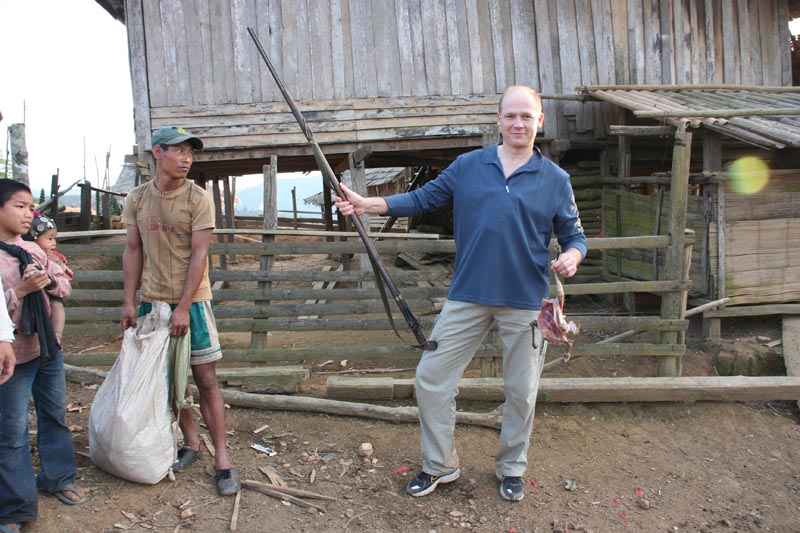
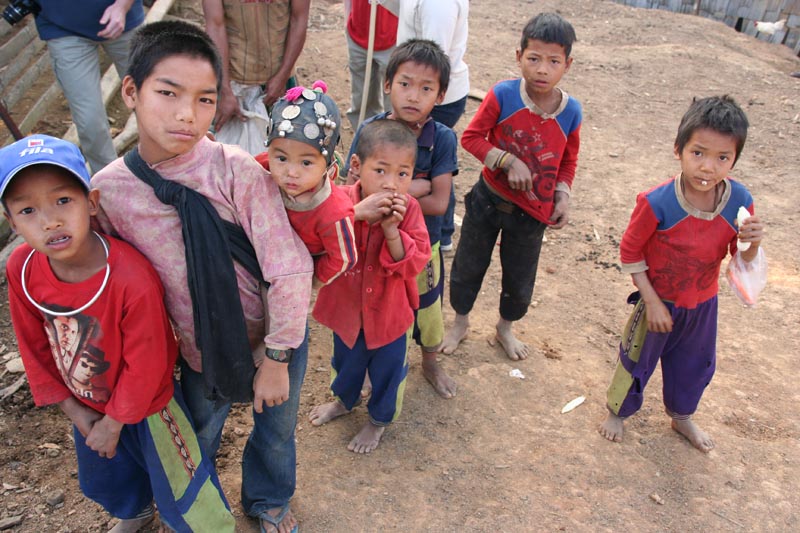
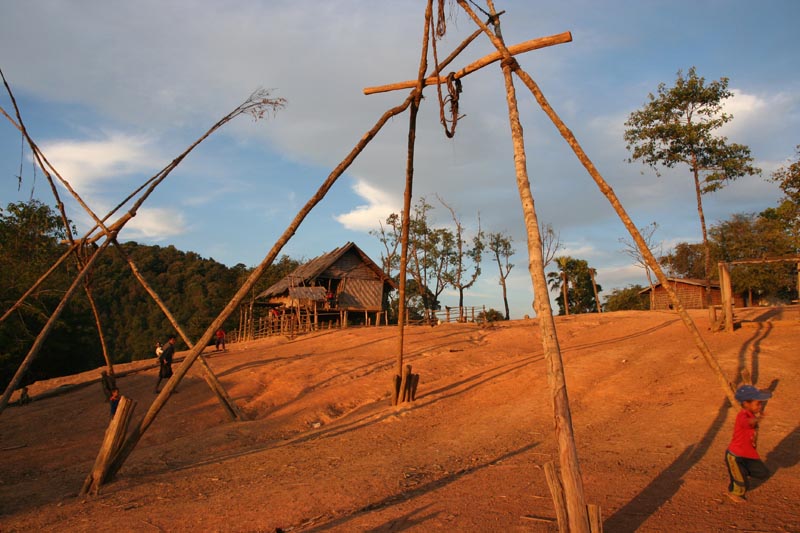
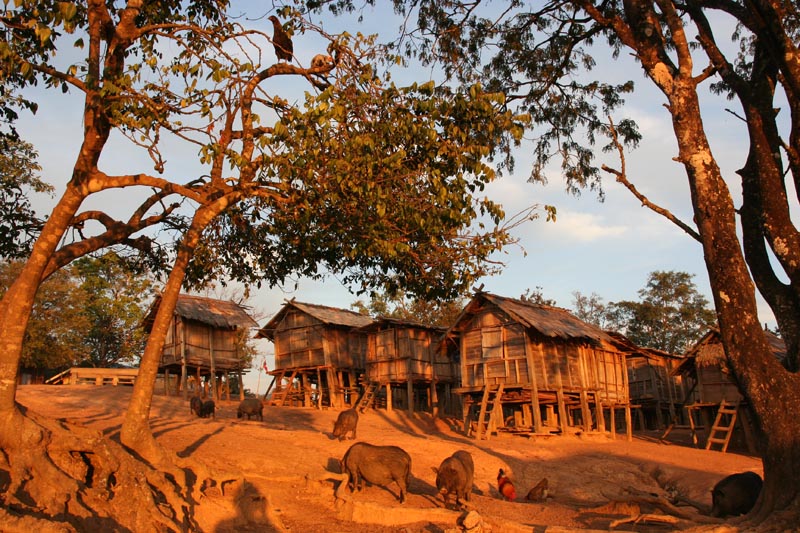
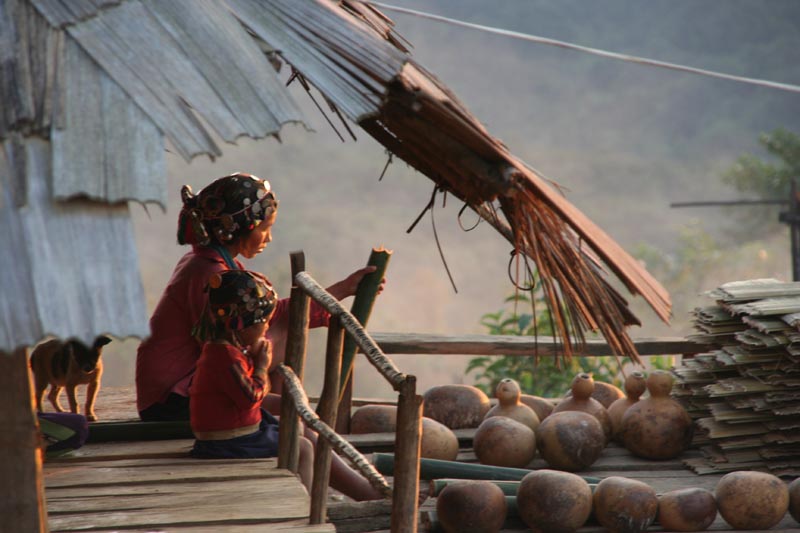
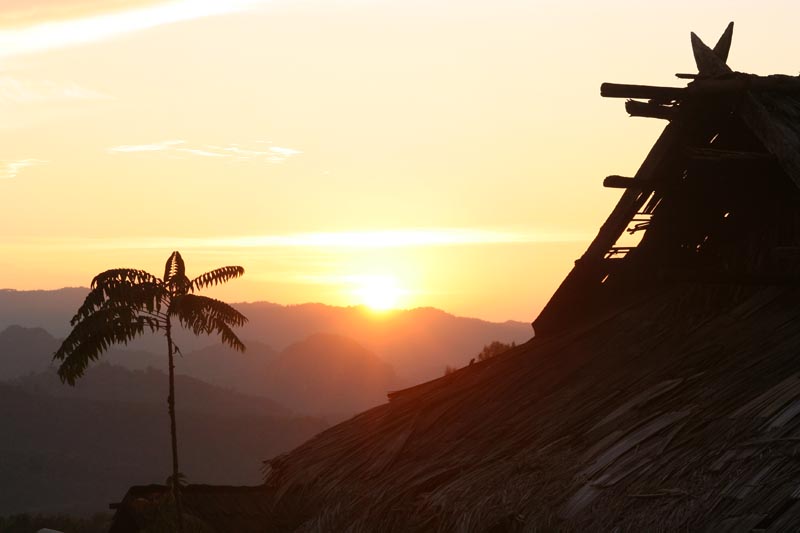
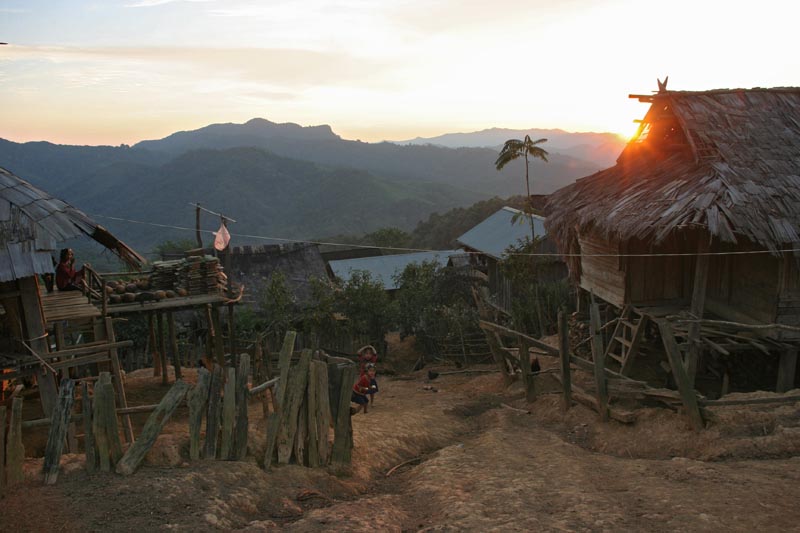
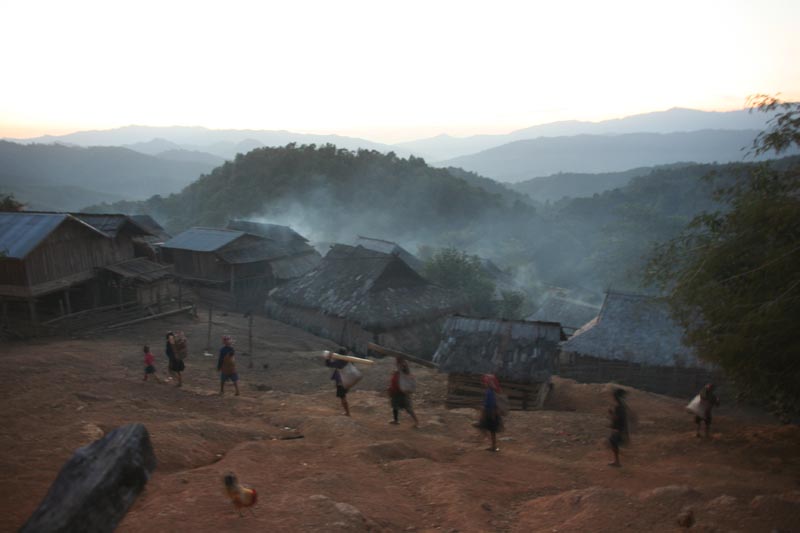
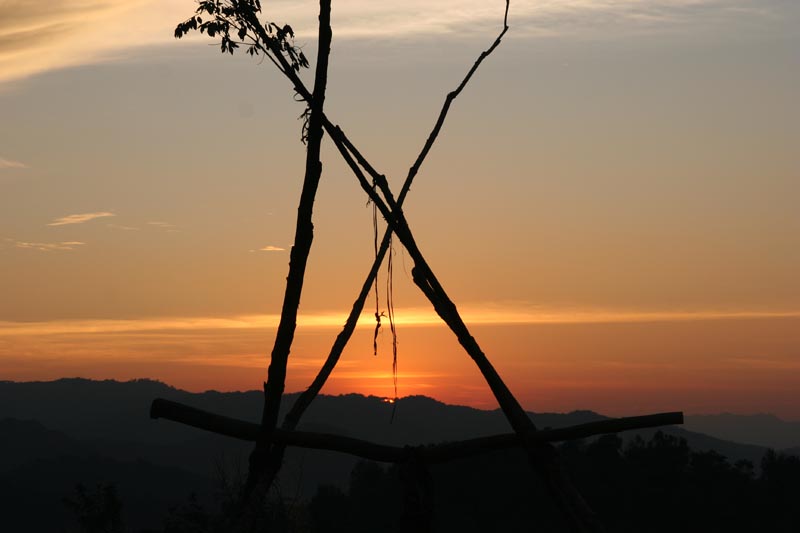
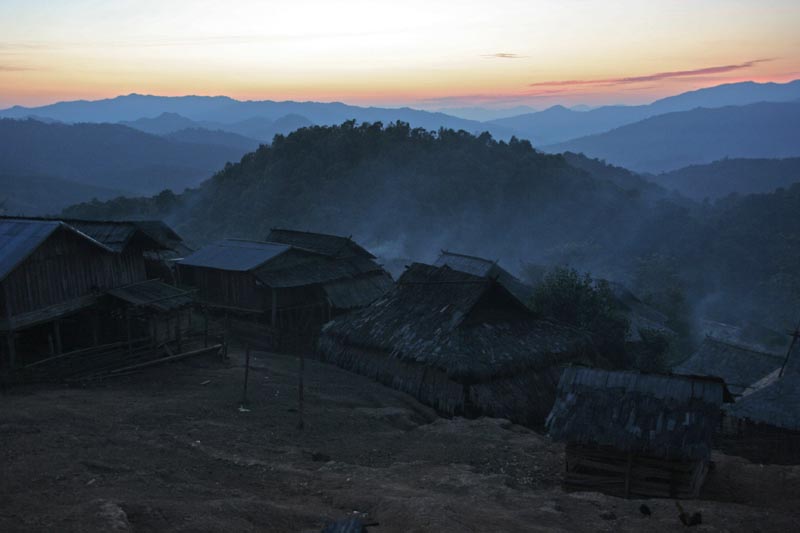
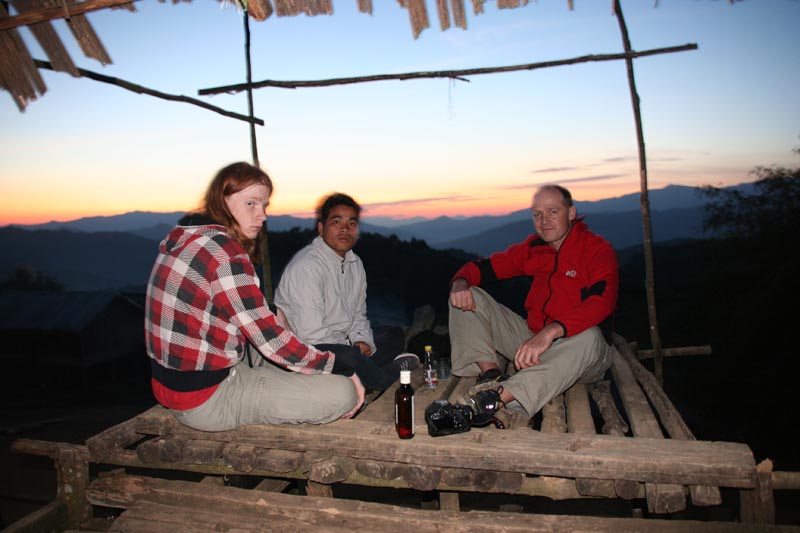
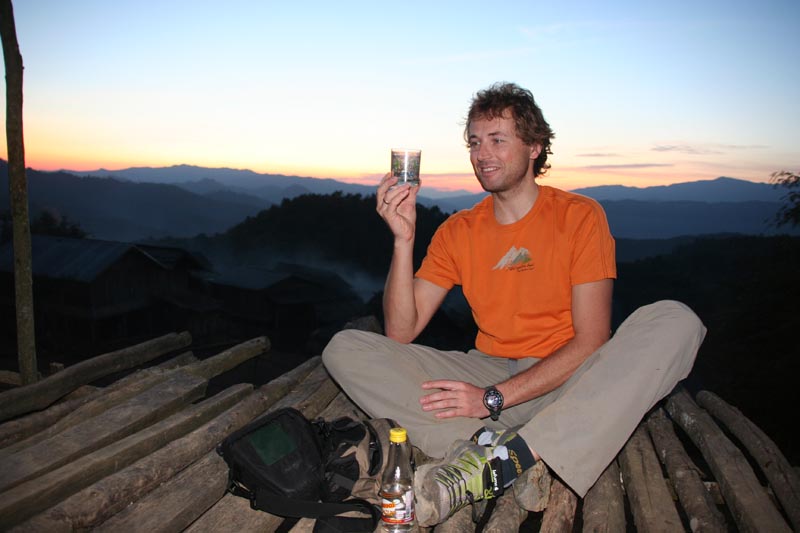
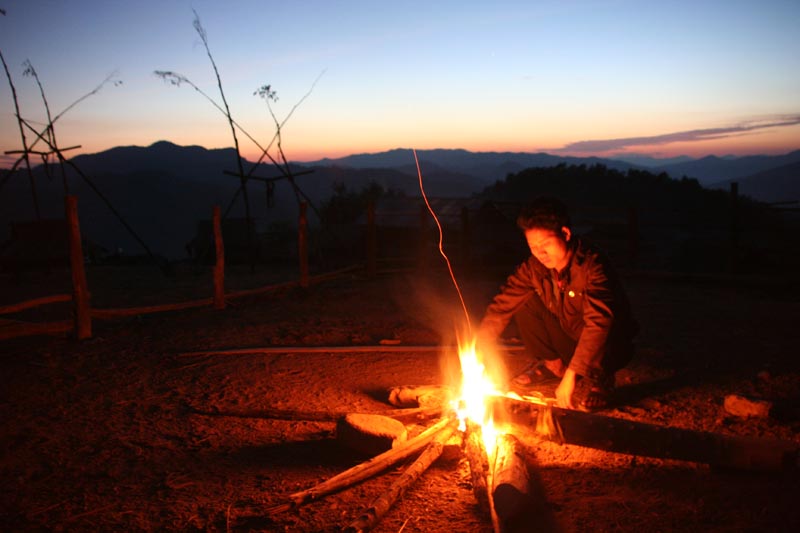
The epopee of jungle animals did not stop with this, because during the cooking of the bird somebody else brought a snake with its head cut off. It was not expensive so we bought also the snake. Our guide immediately rushed to clean the scales and boil it.
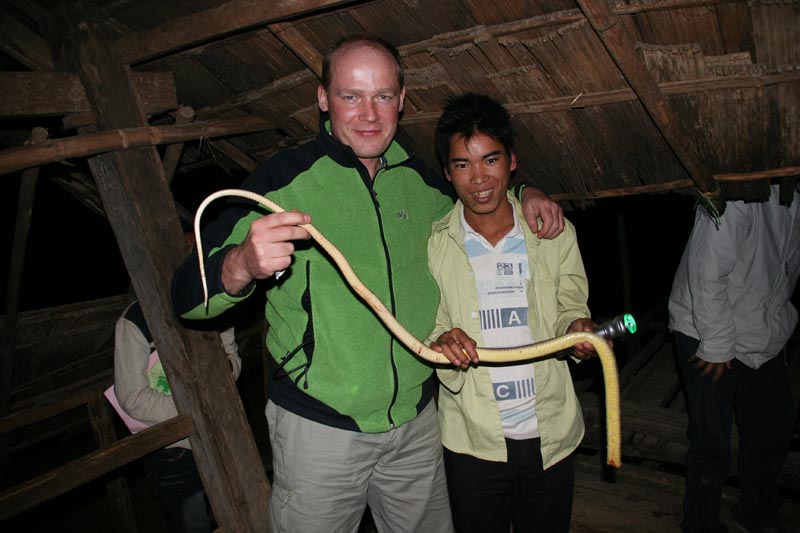
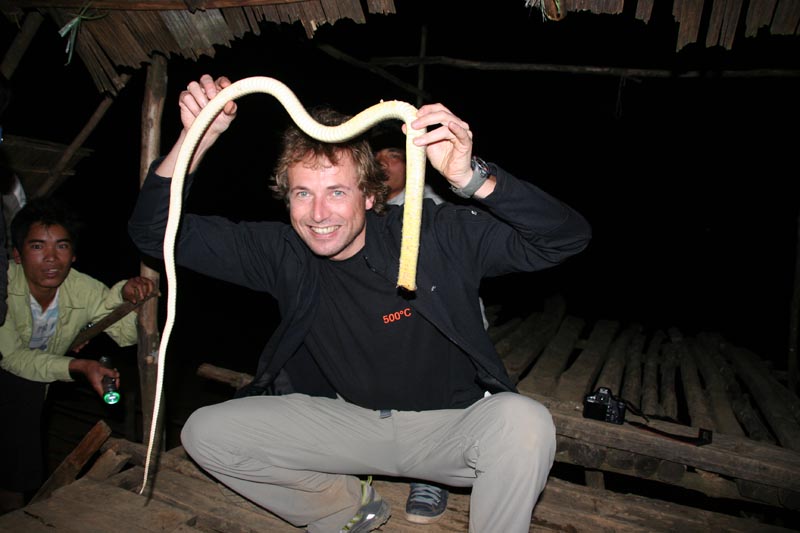
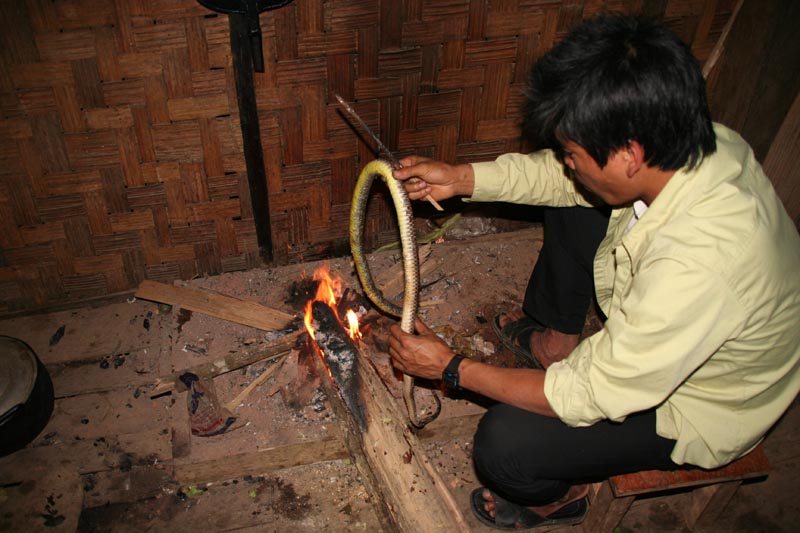
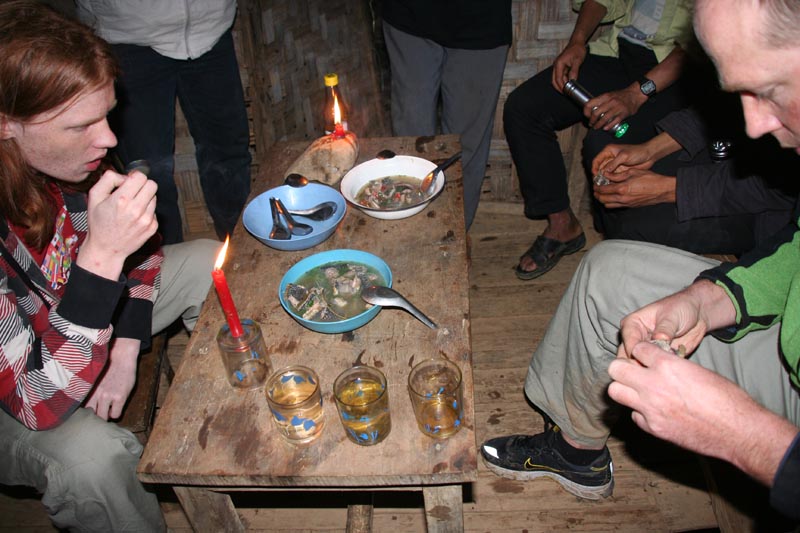
Before sleeping the elder of village organized a simultaneous massage session for us, involving all the available village girls. The girls had very rough hands and I was just glad that the massage happened through the shirt. Good night.
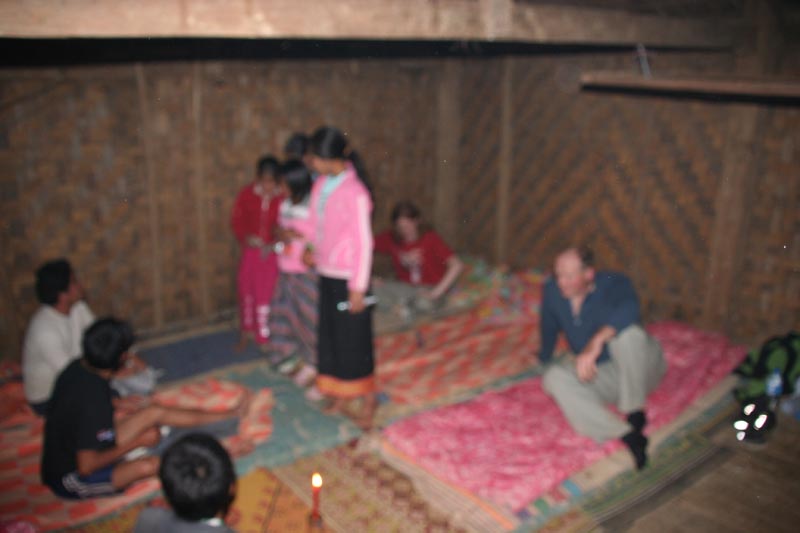
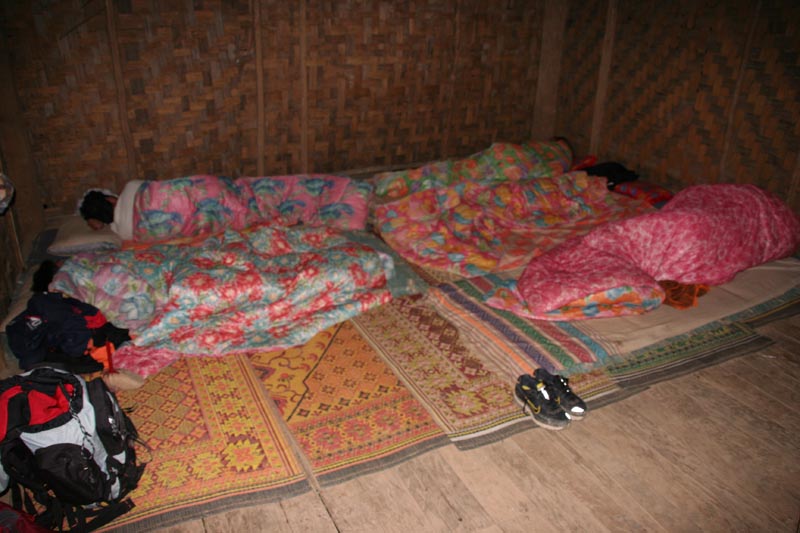
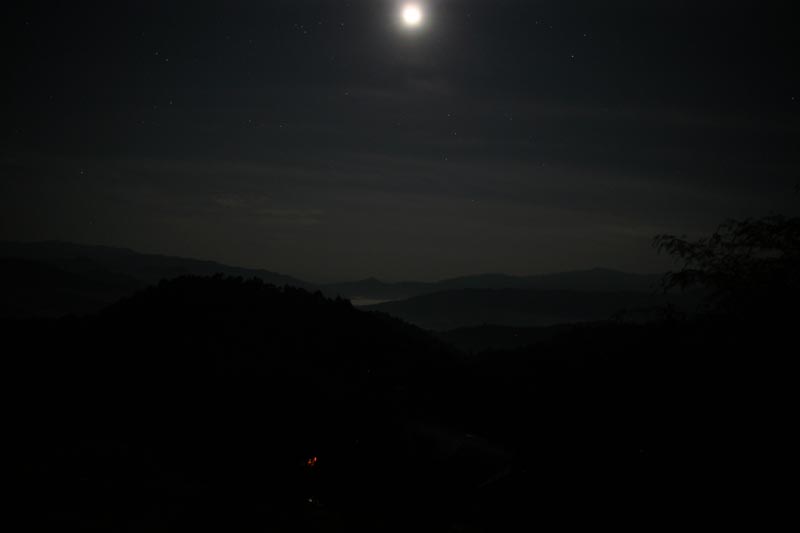
part 2 will follow
to the scheme of the expedition
